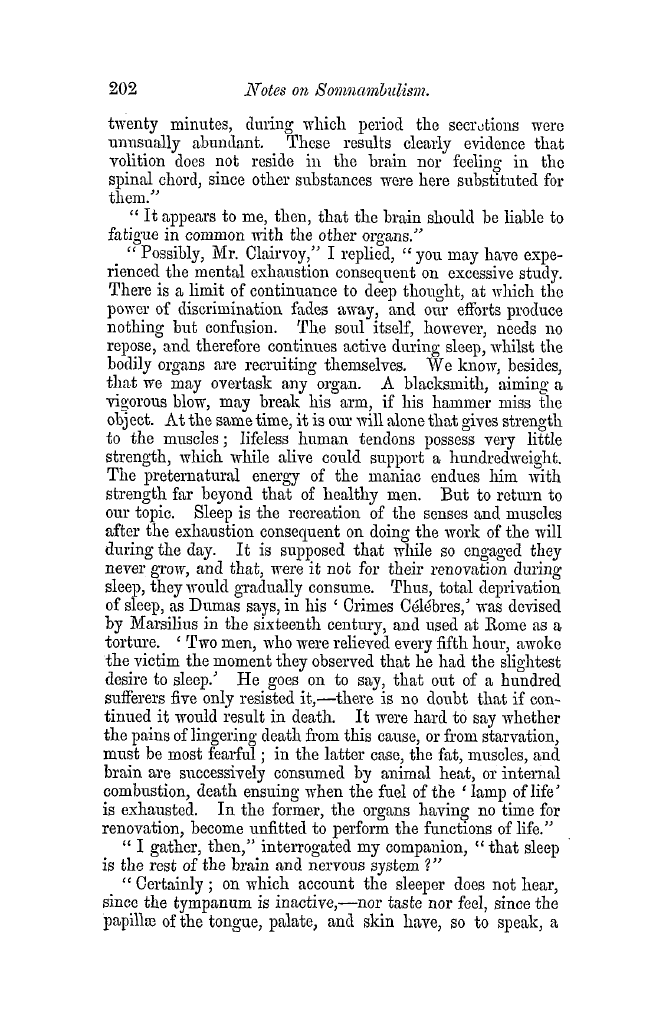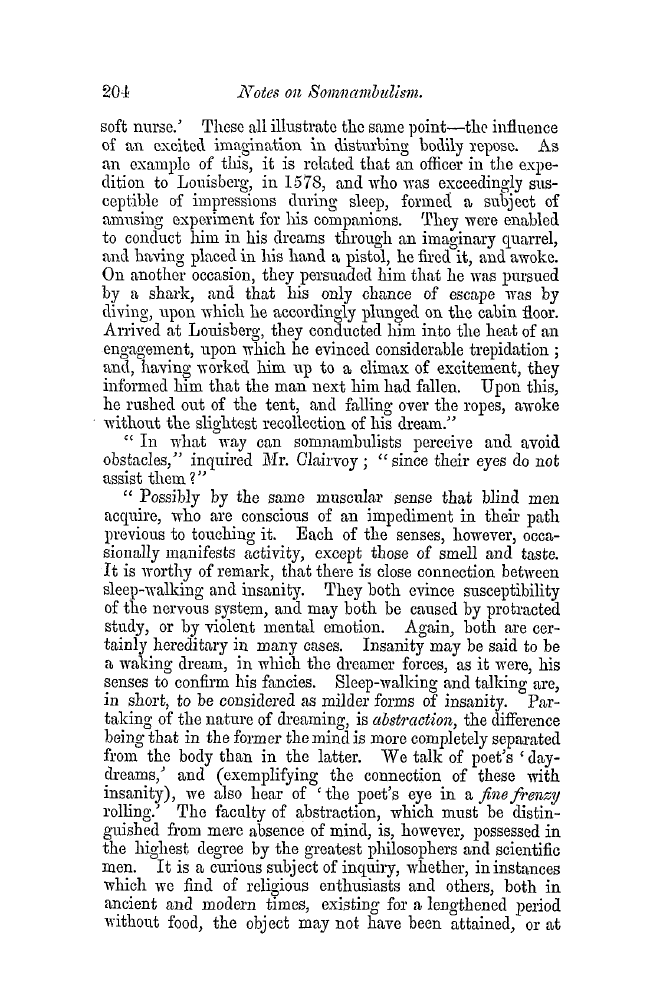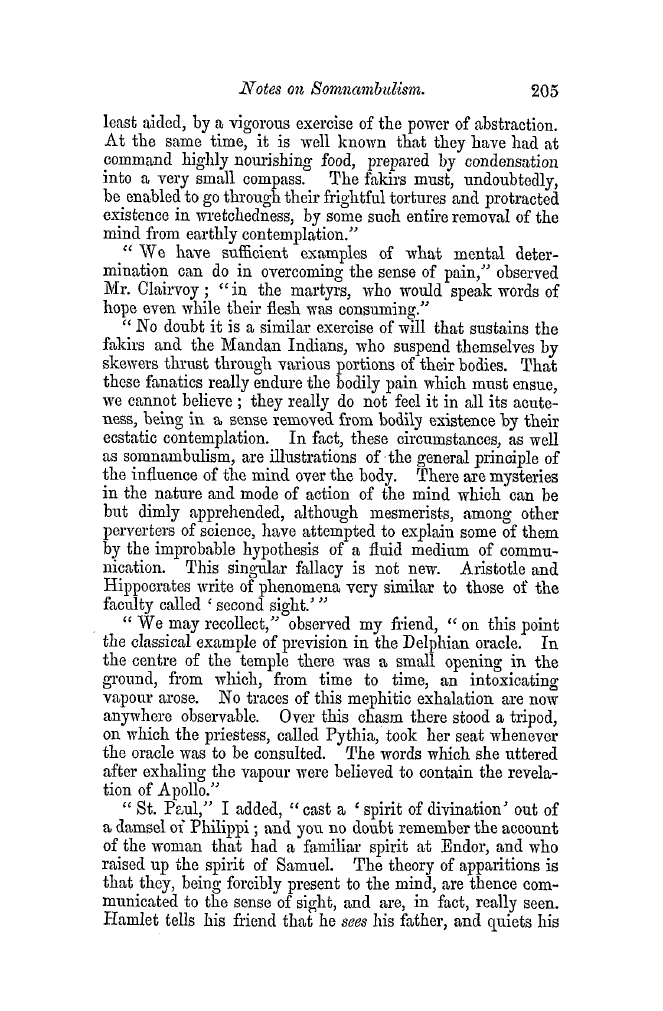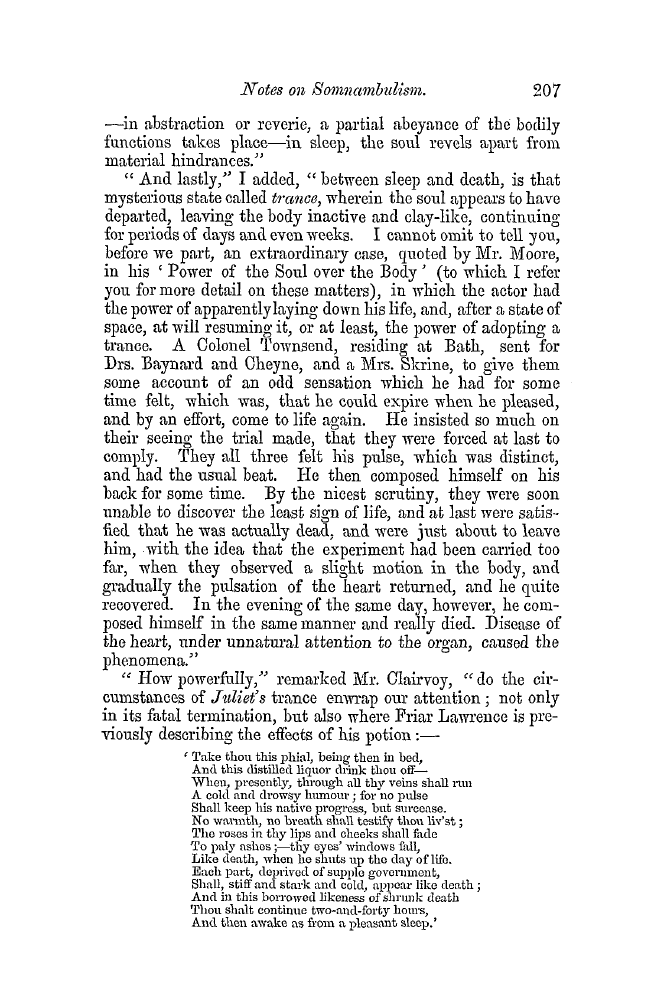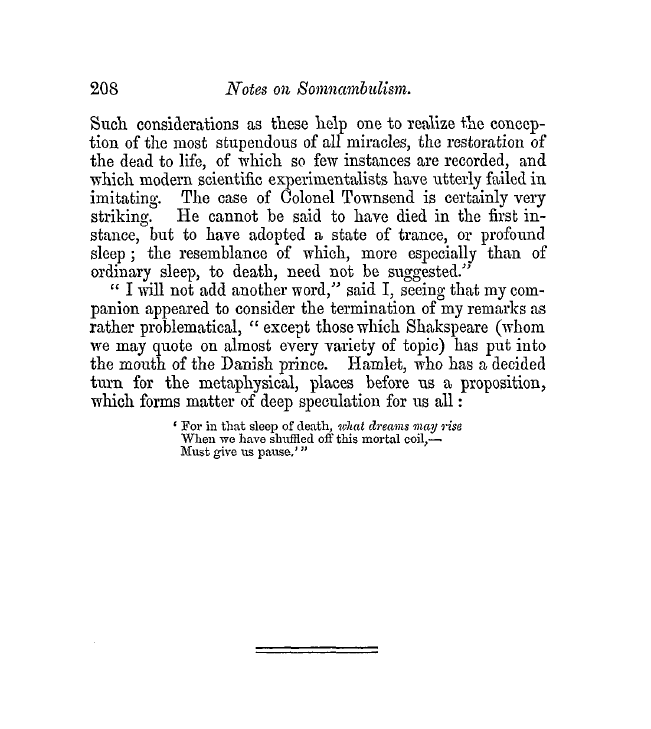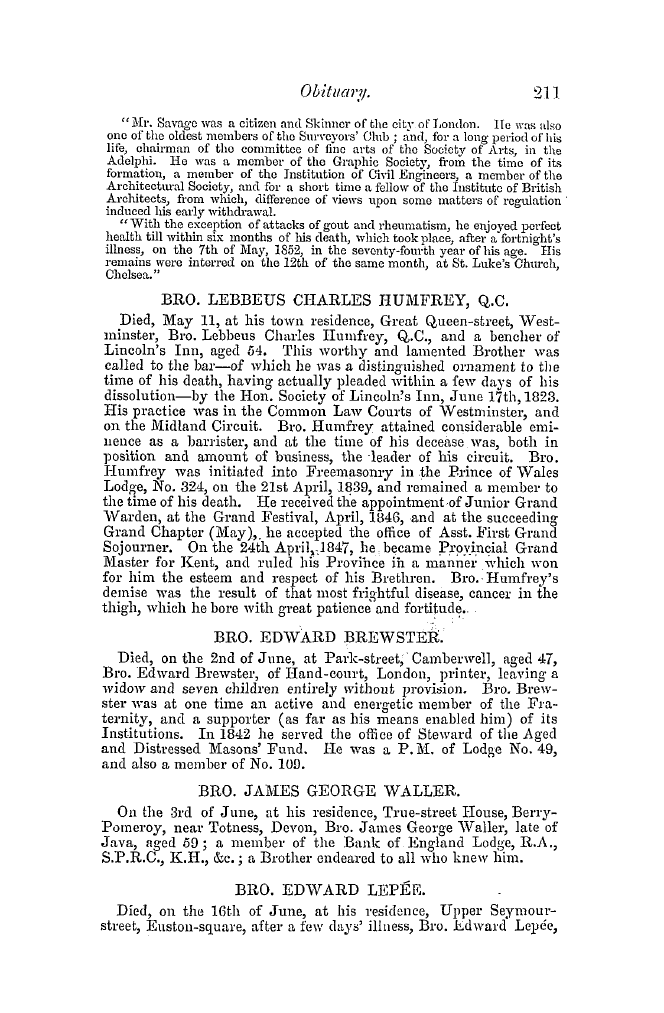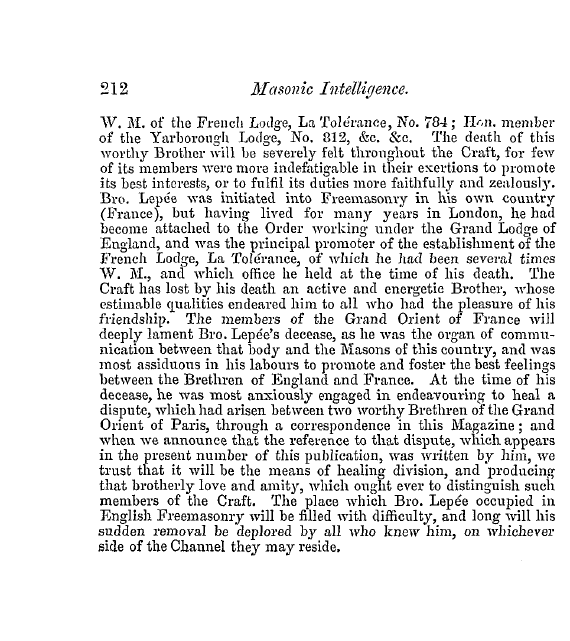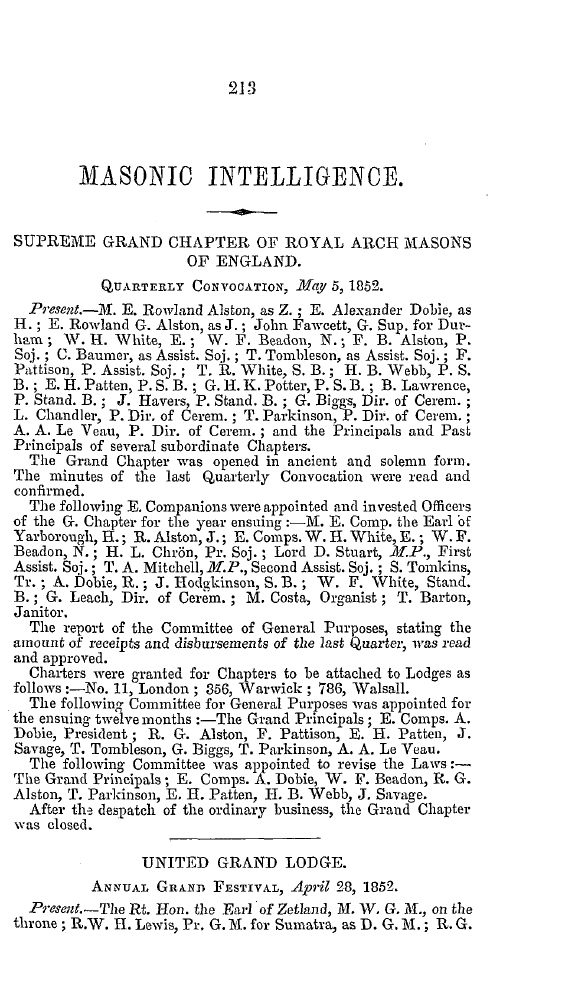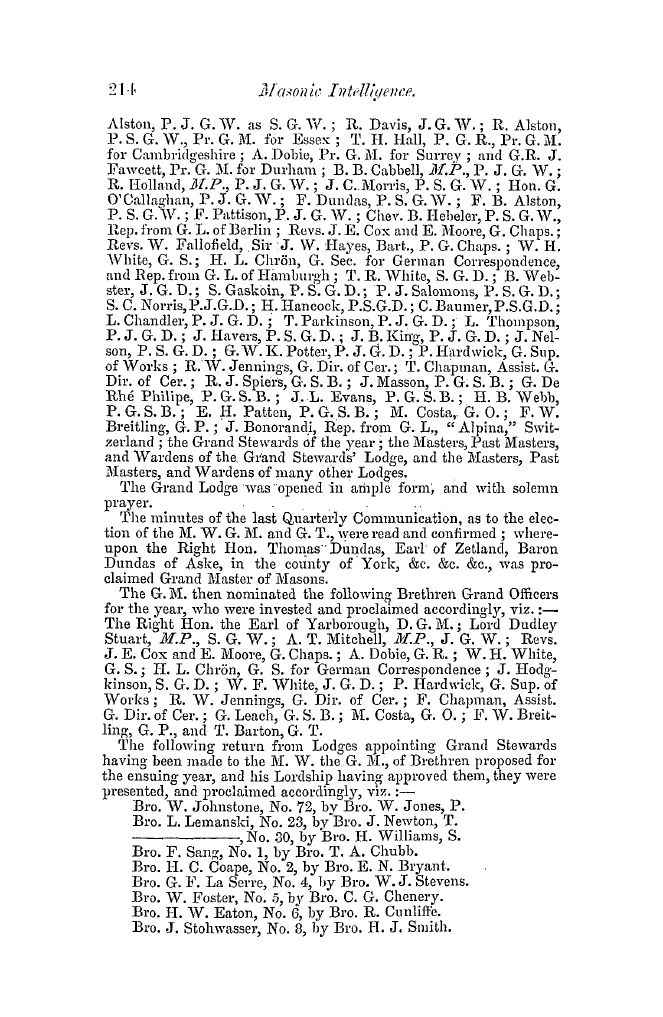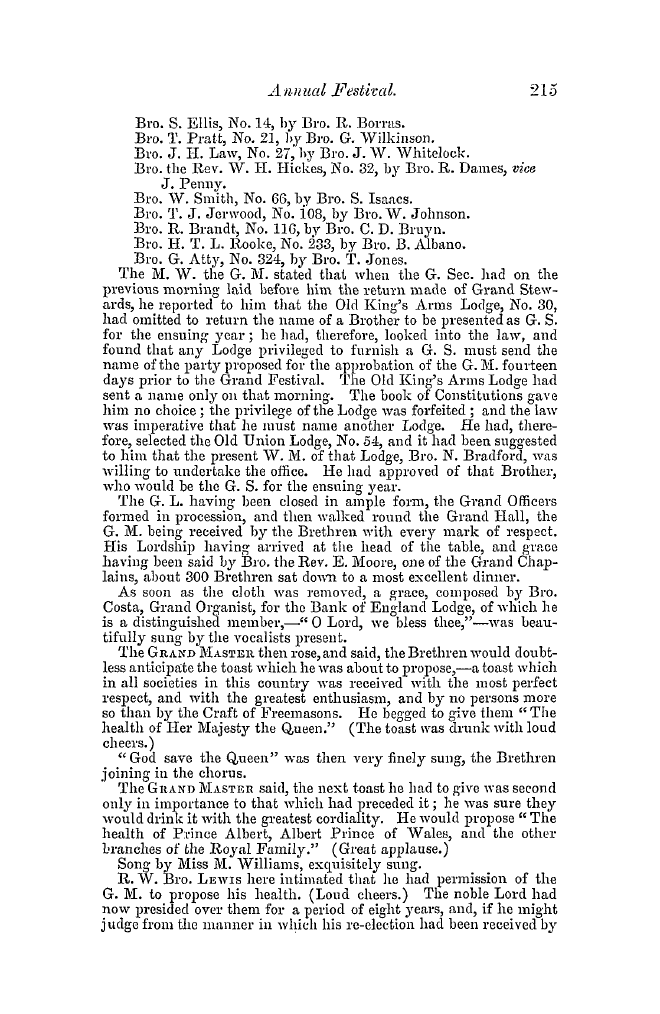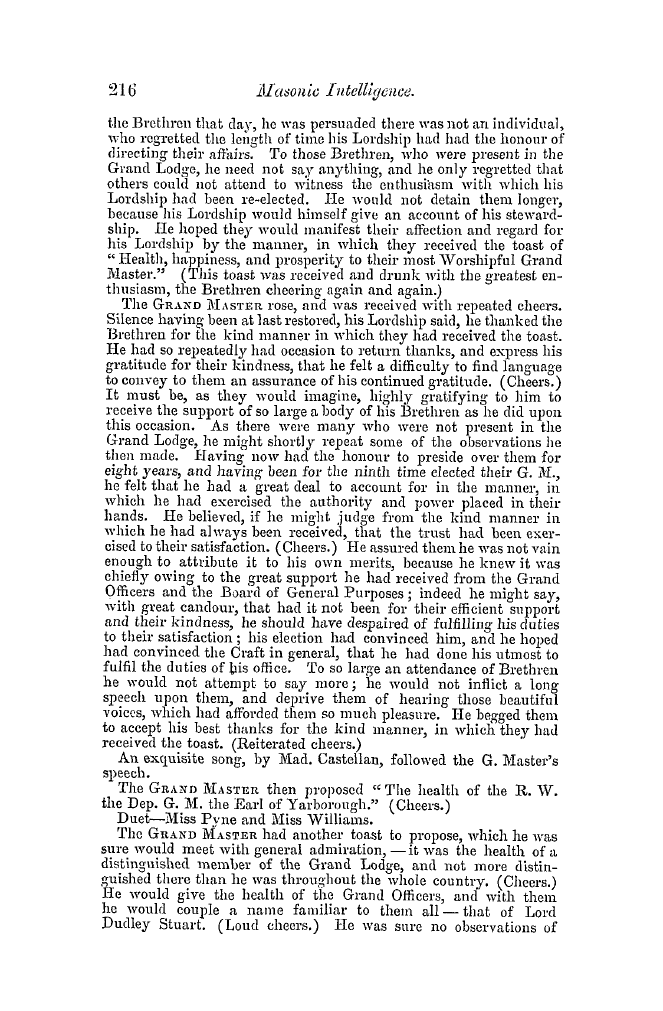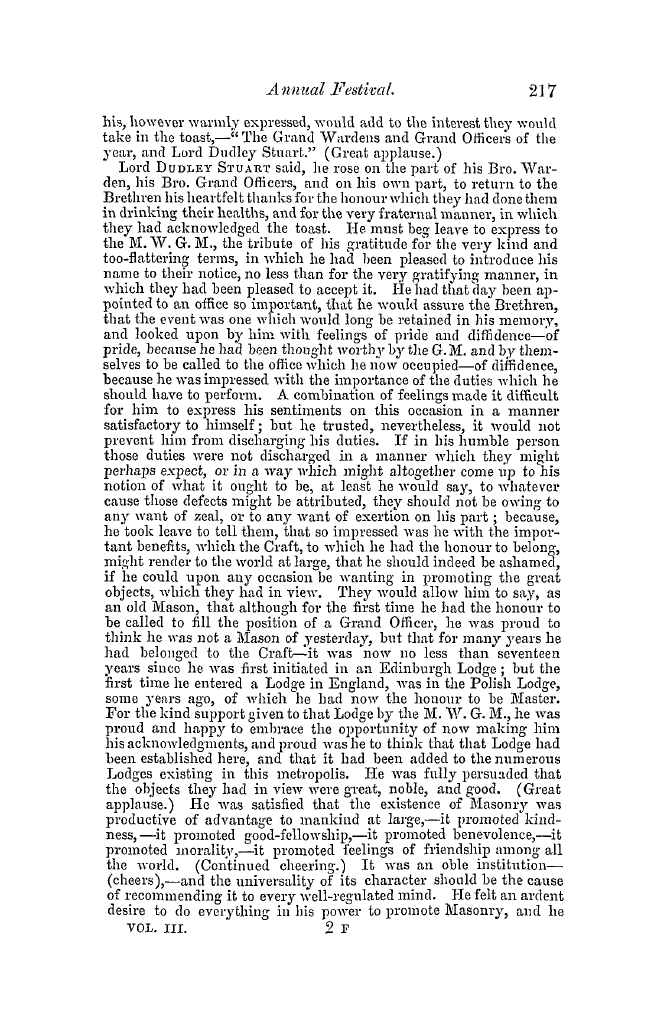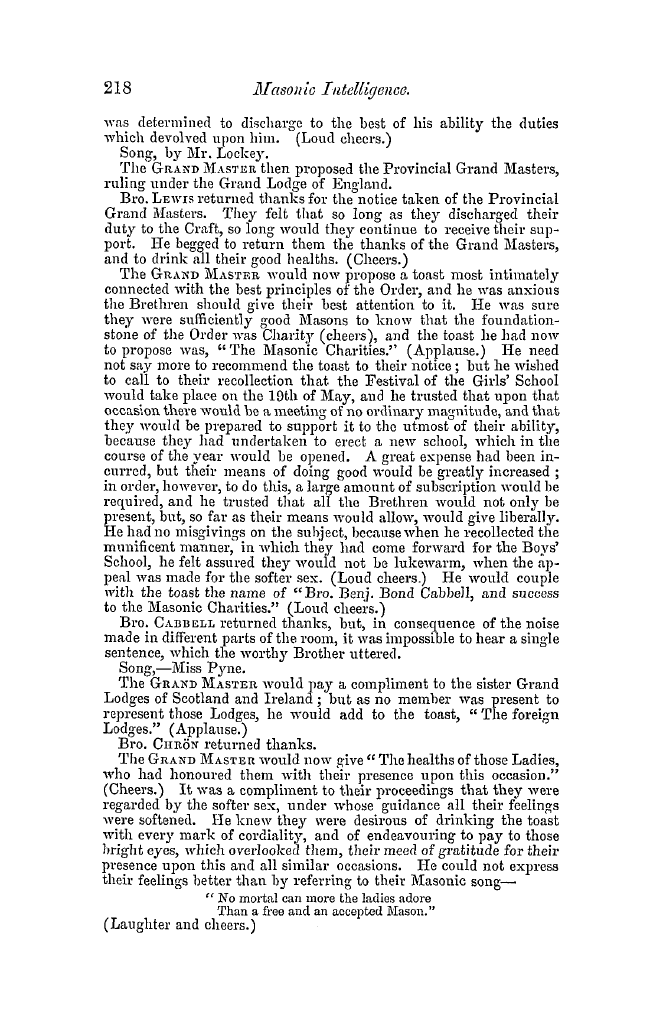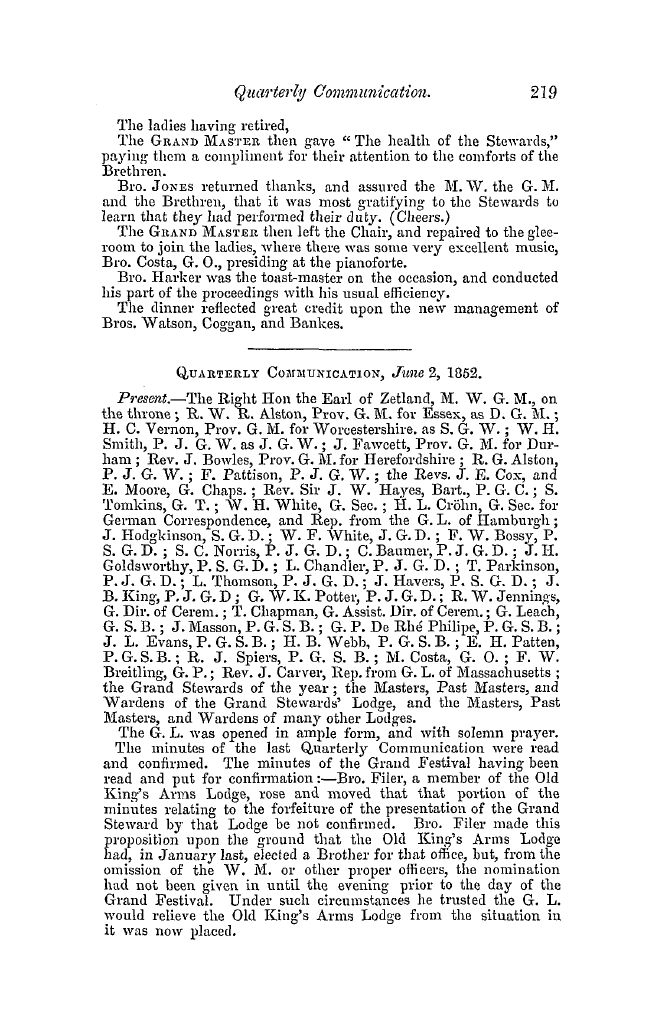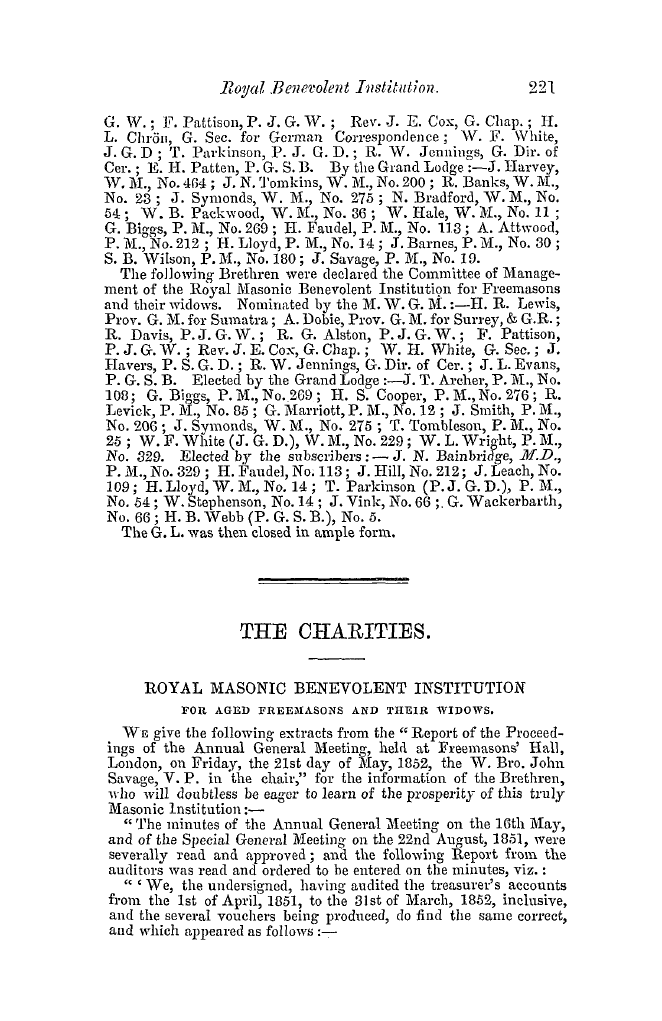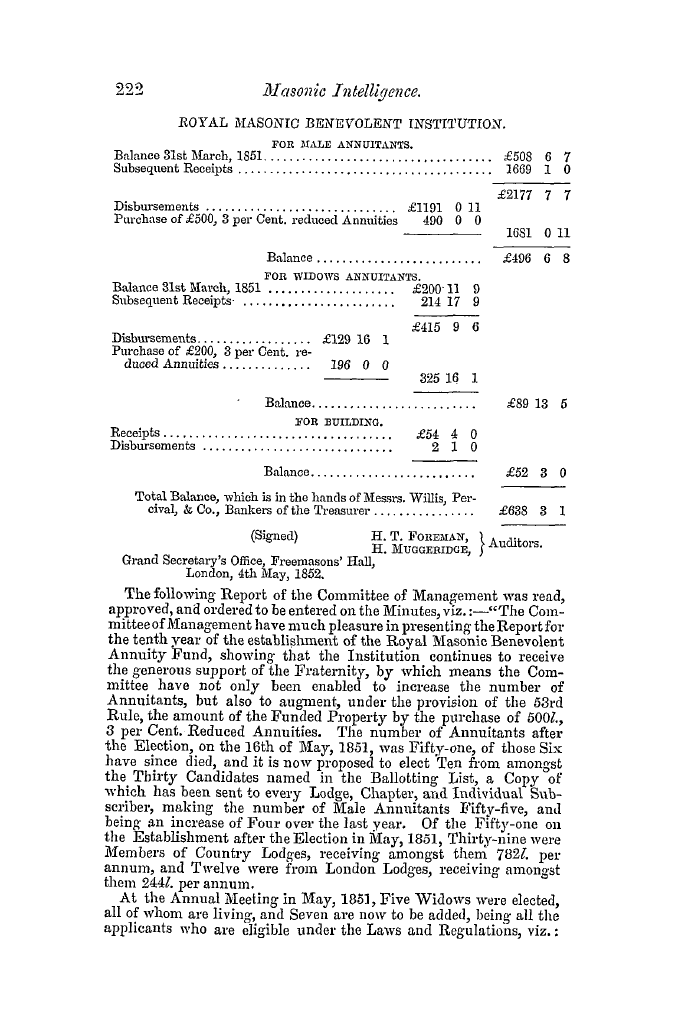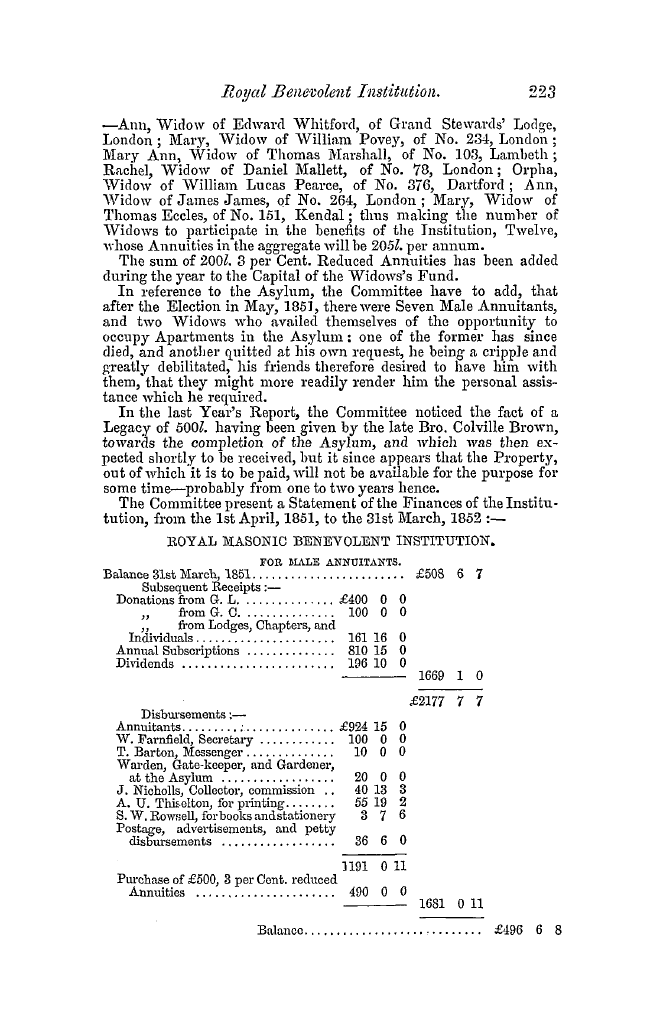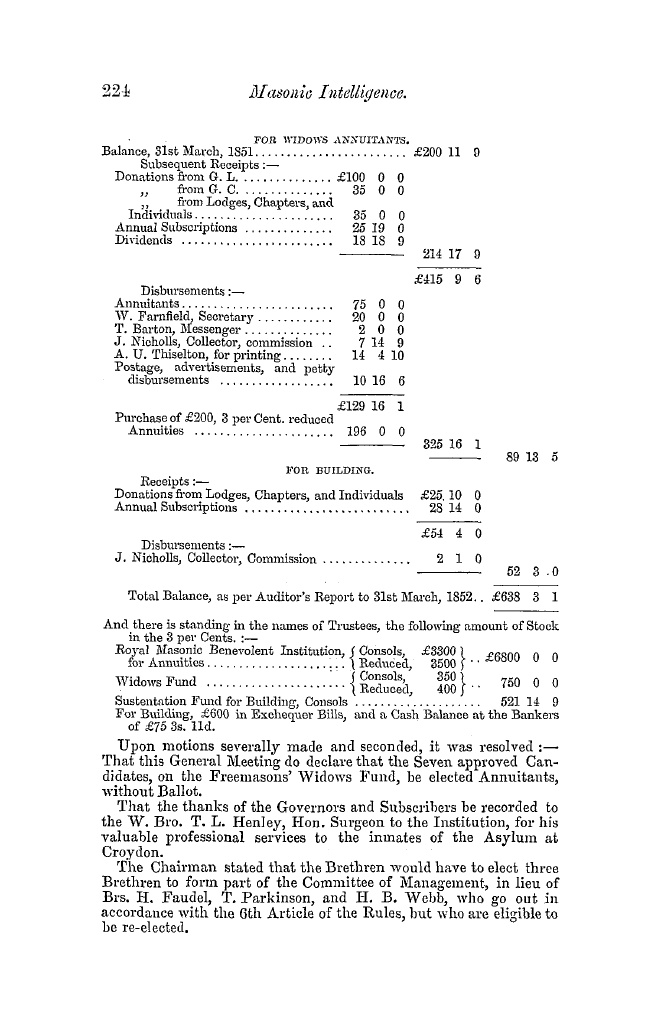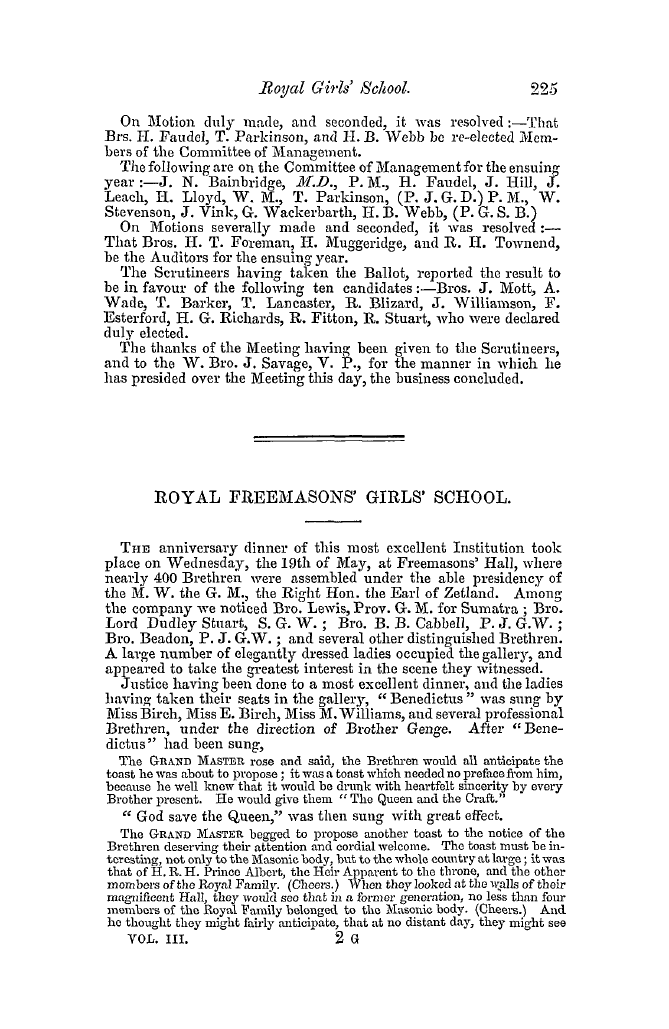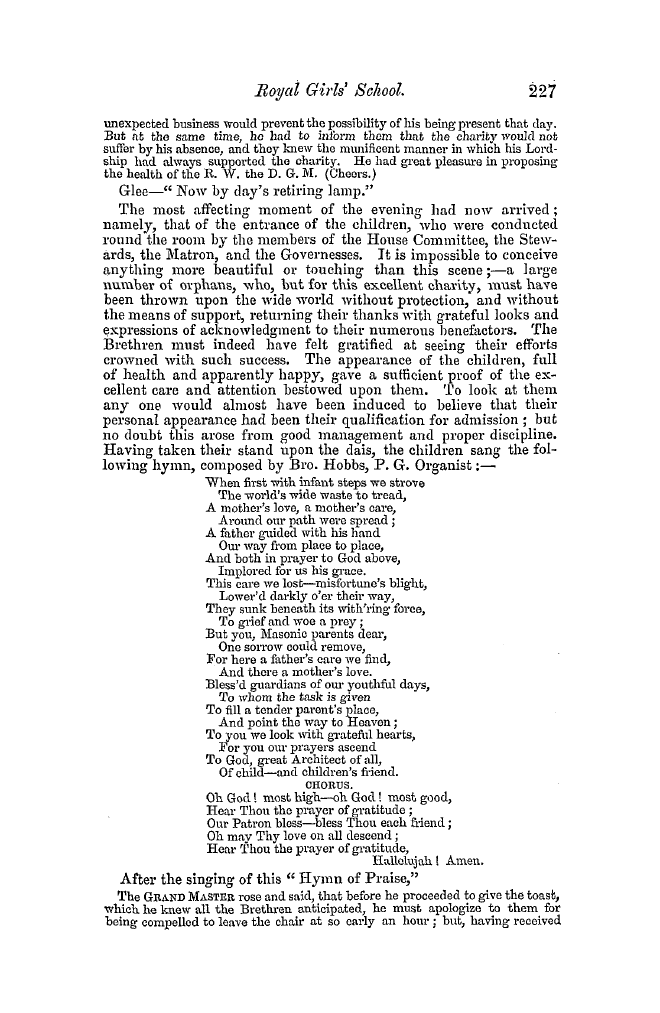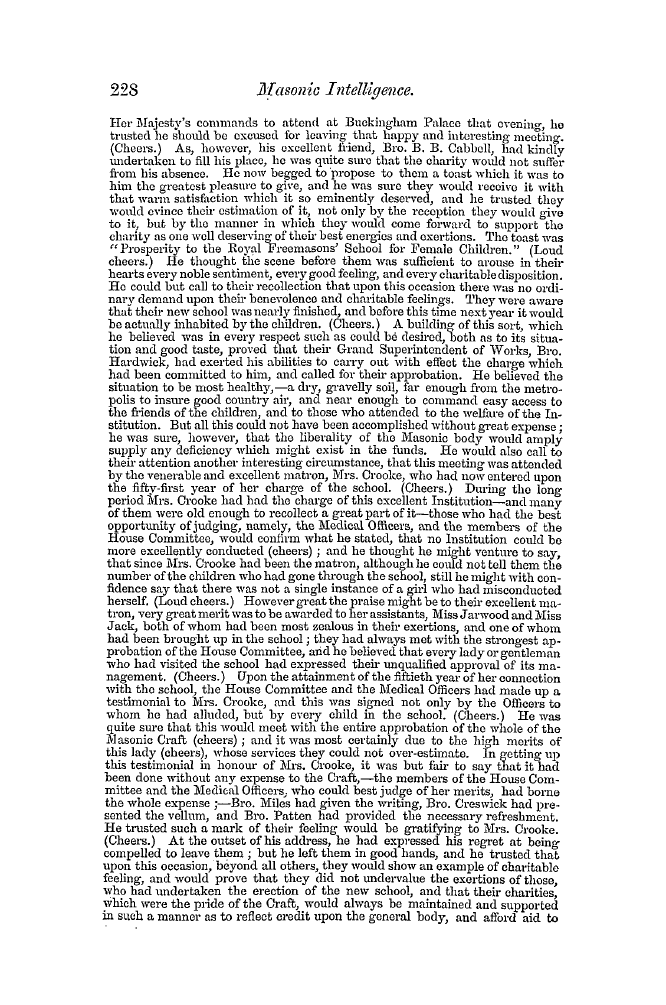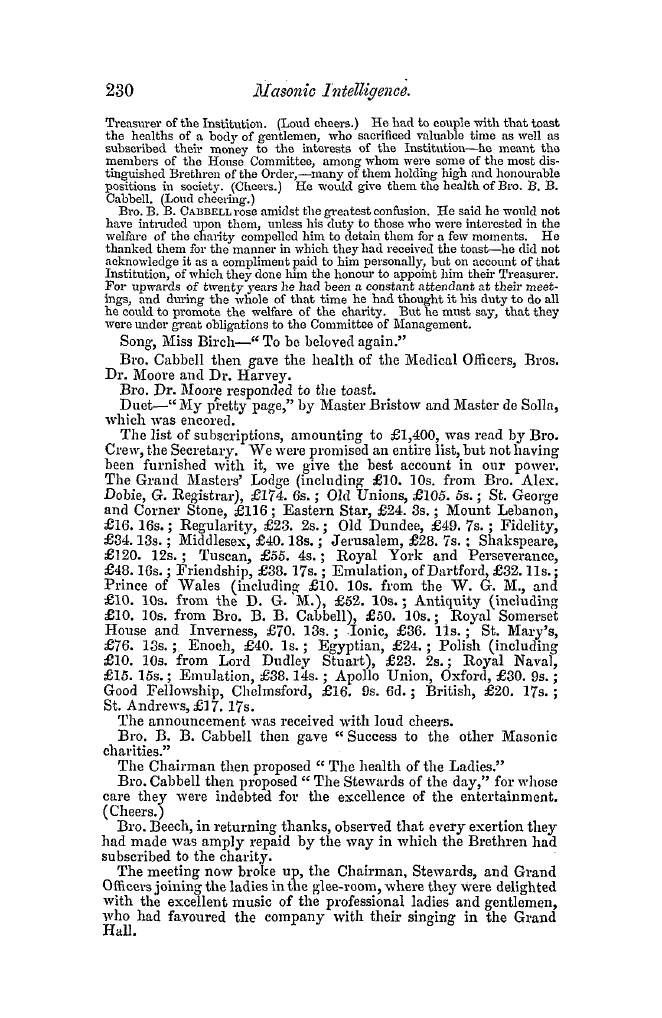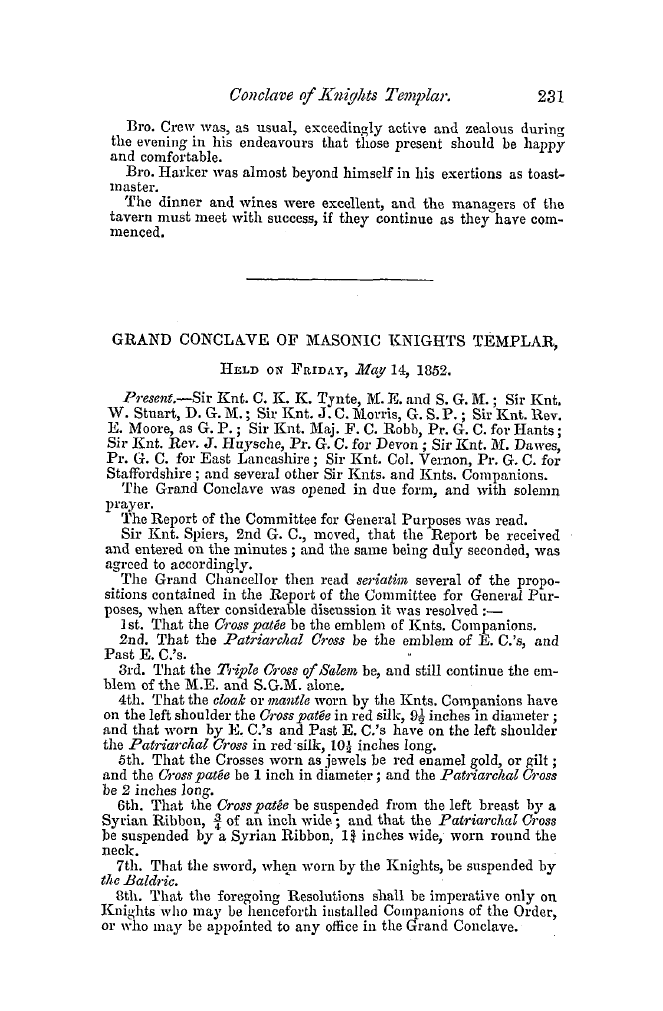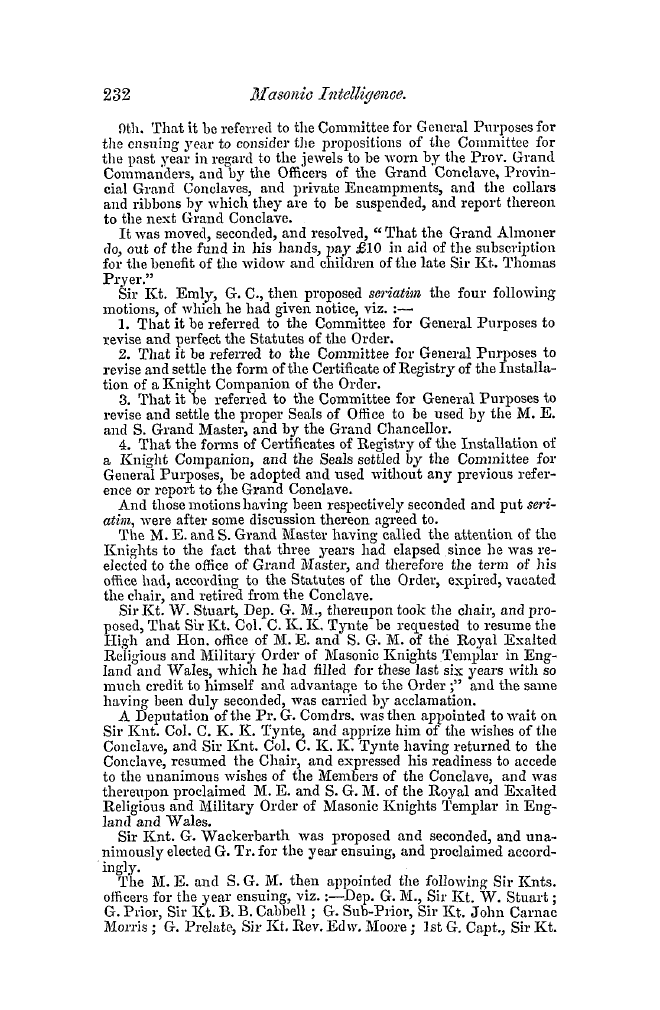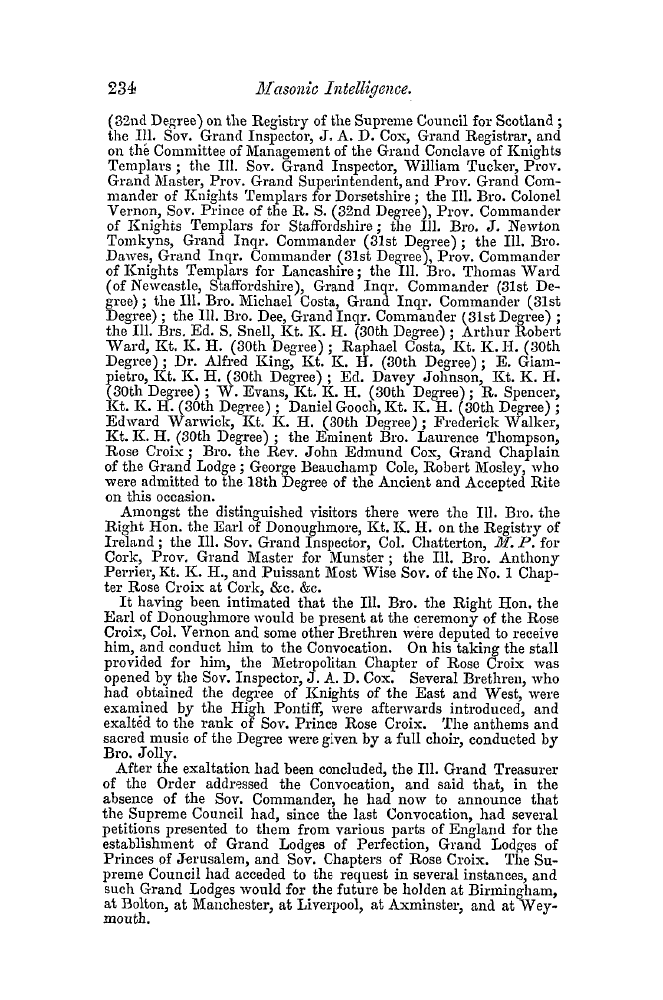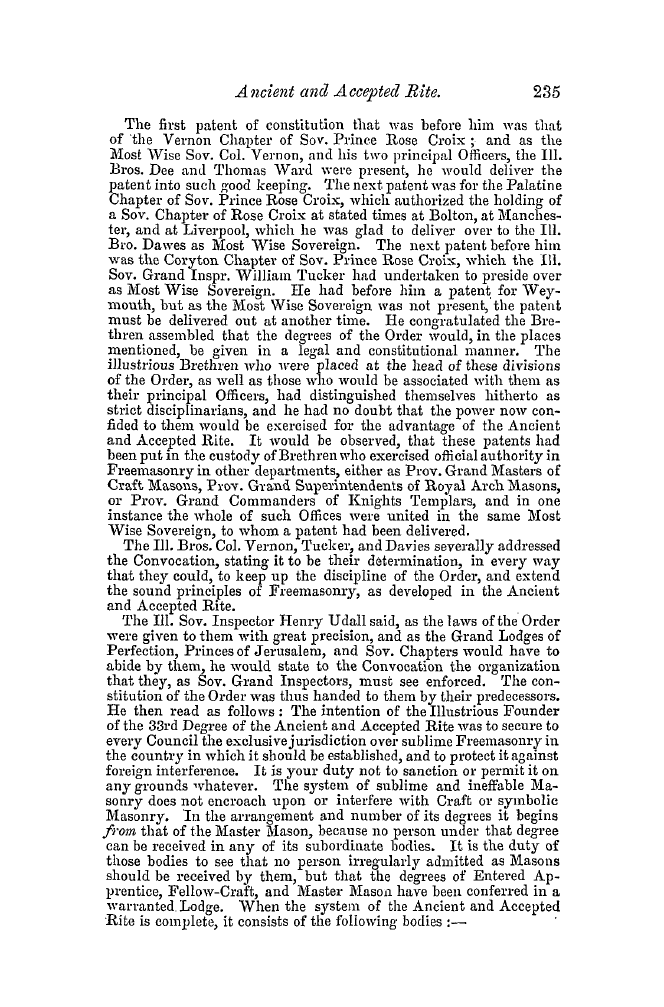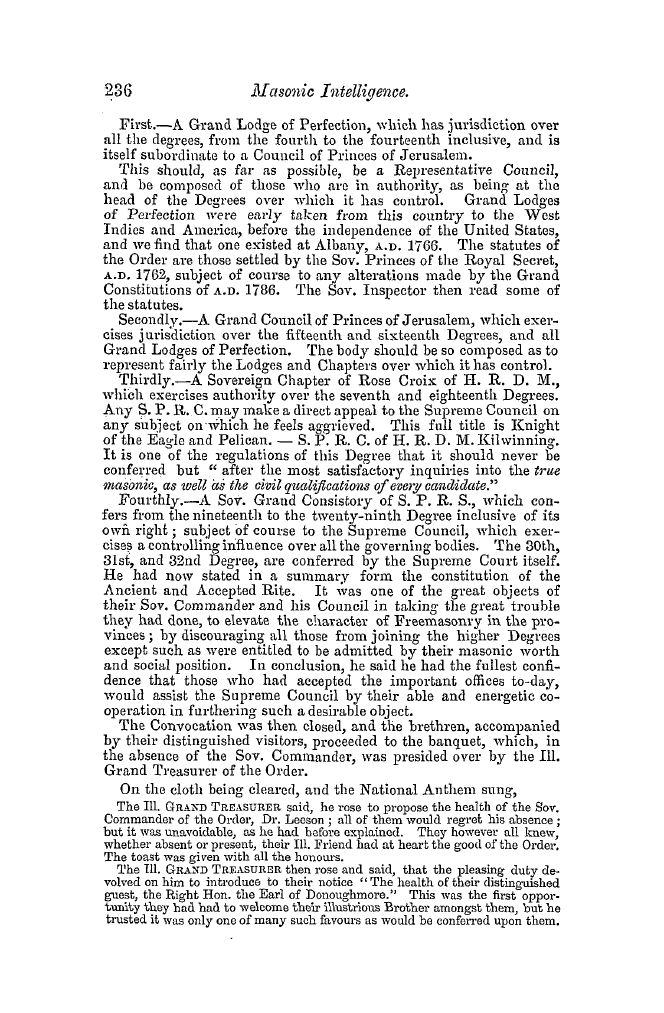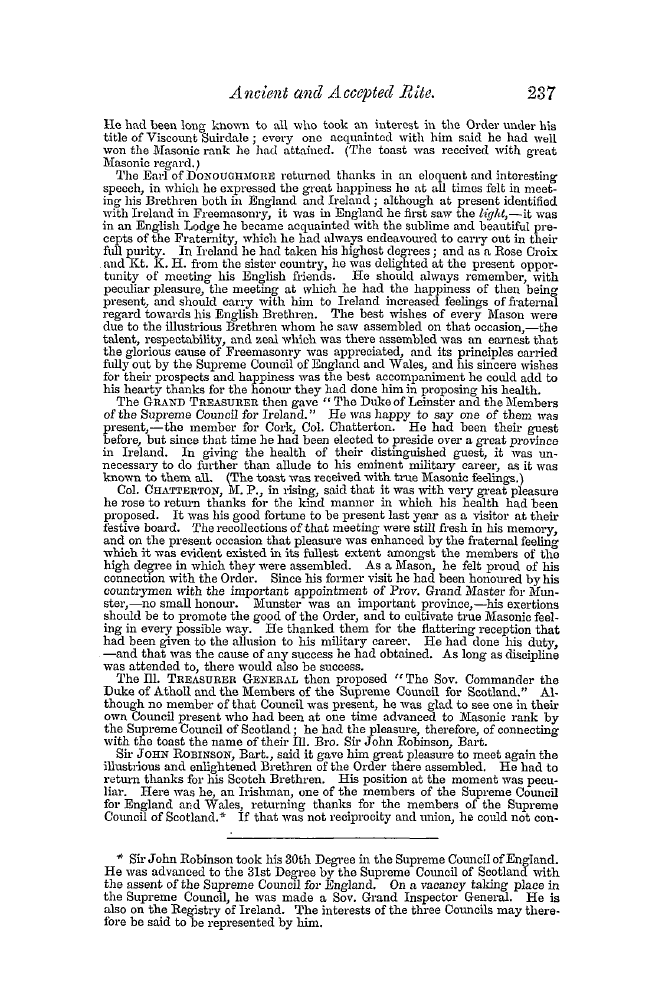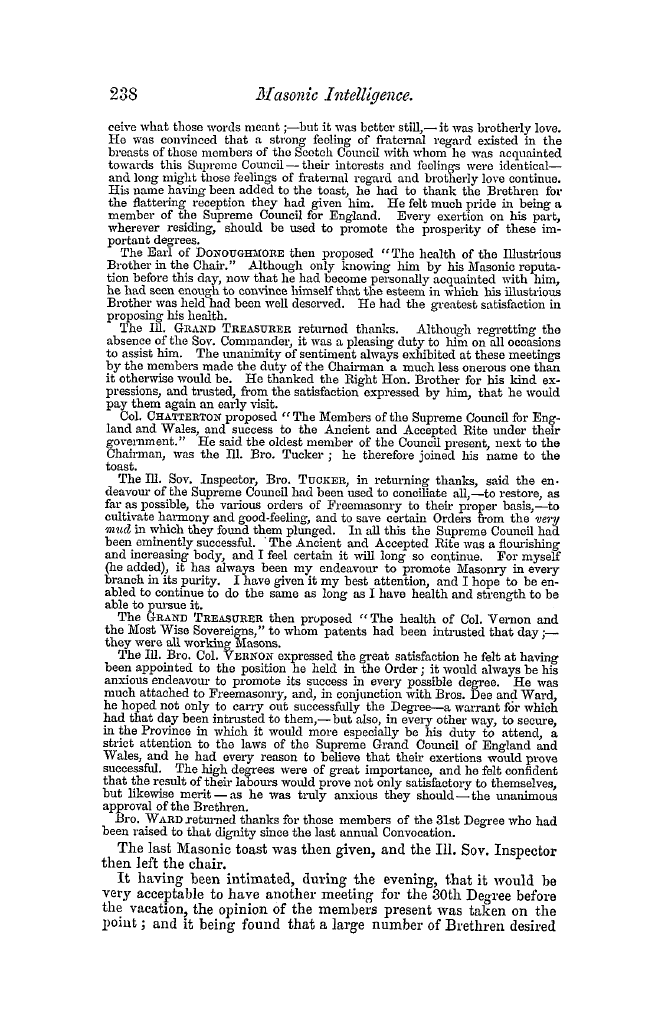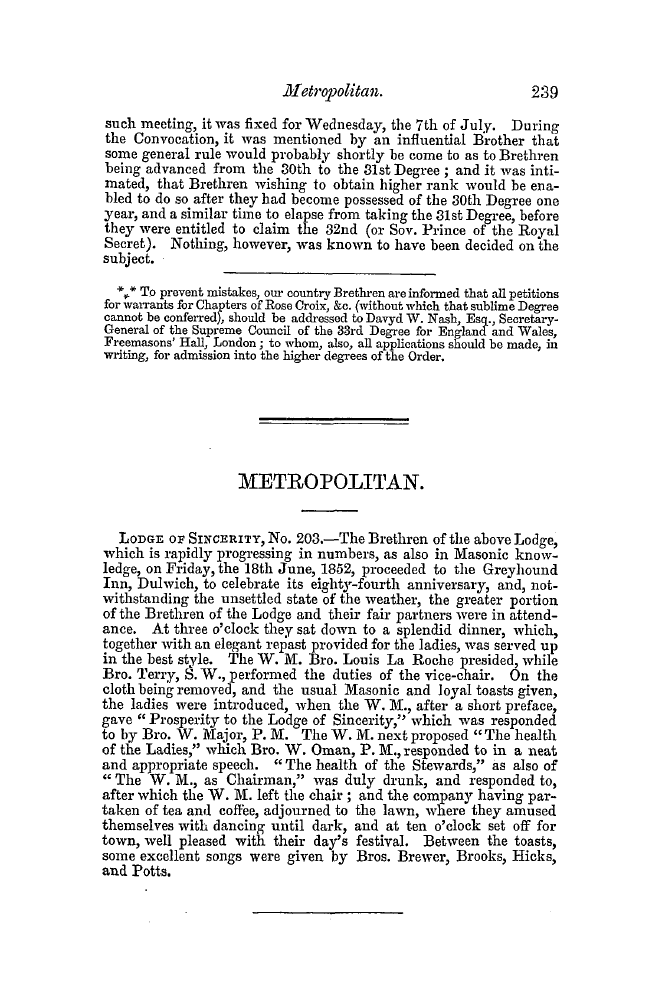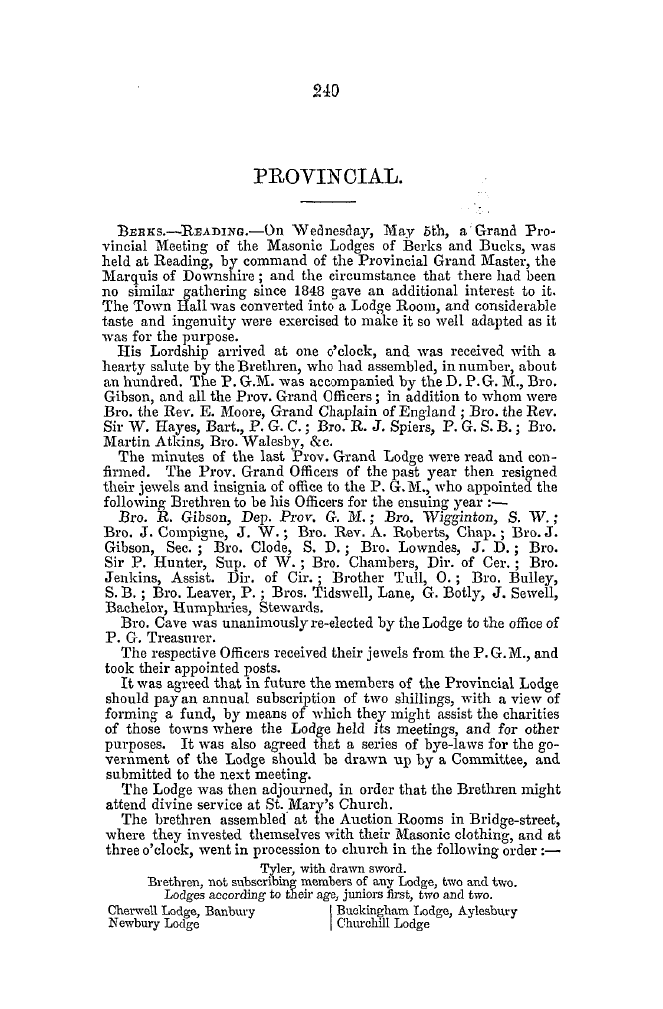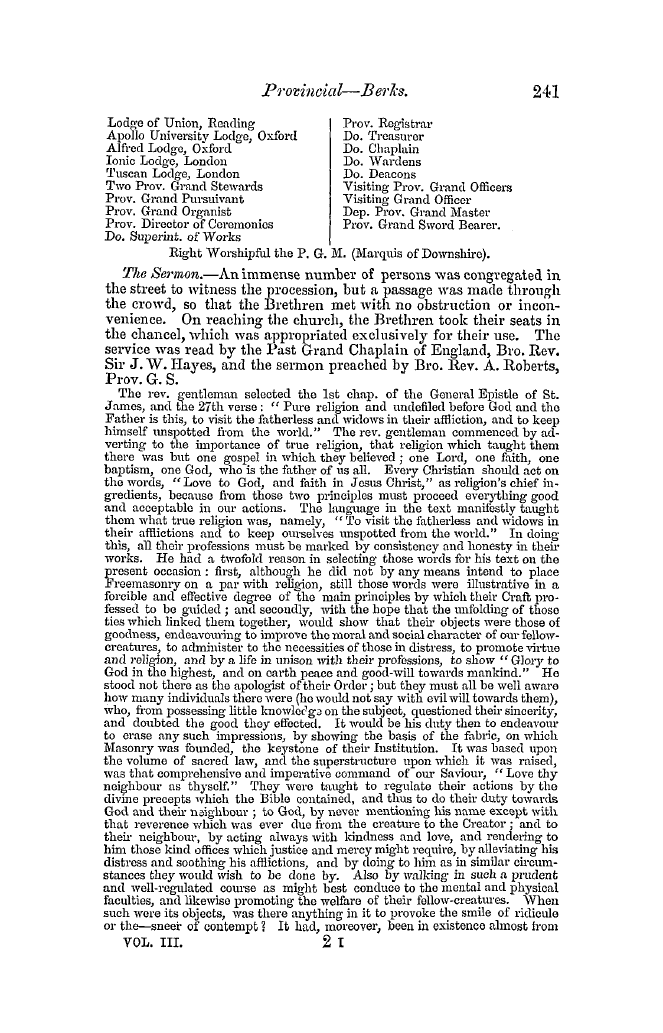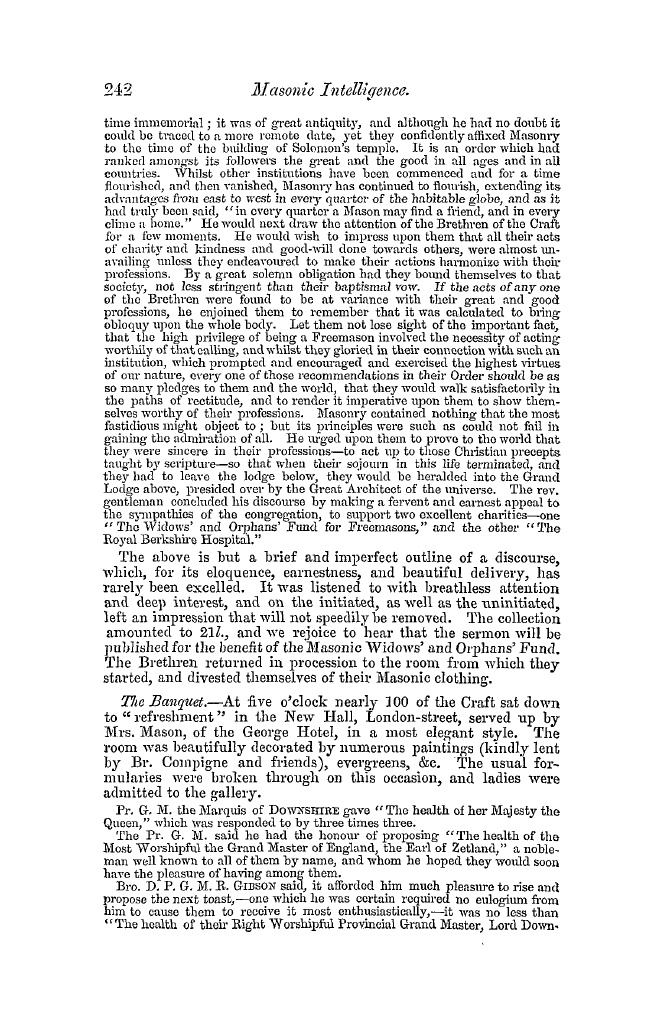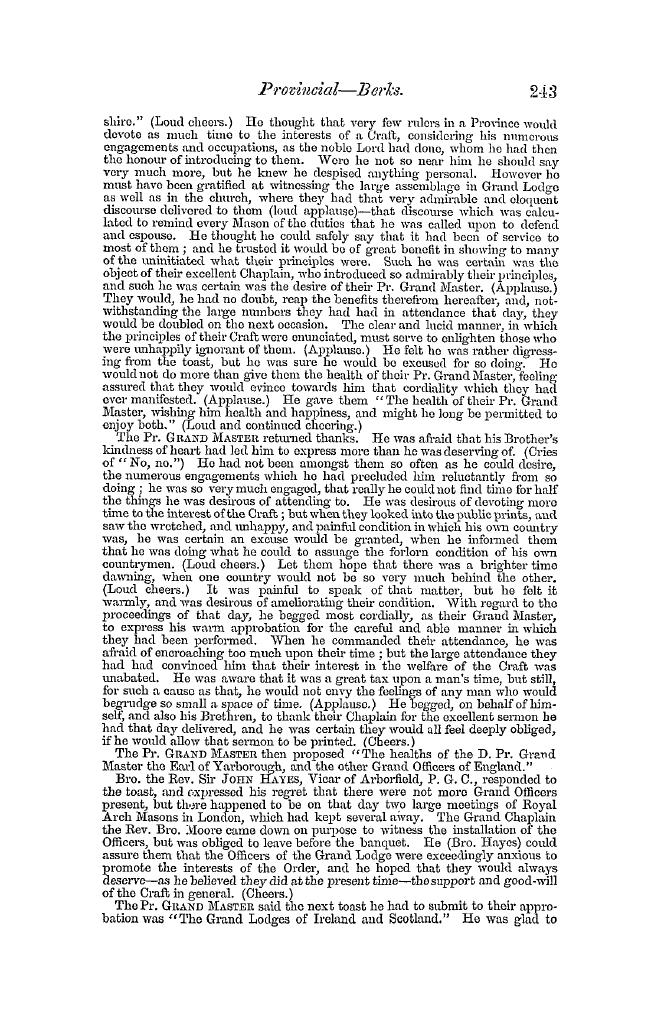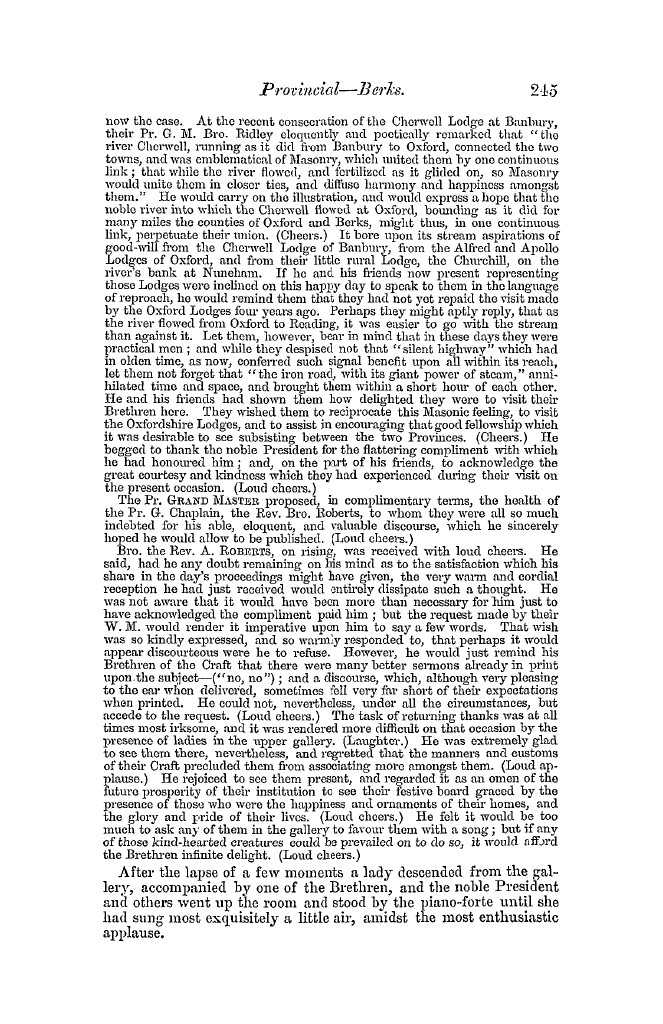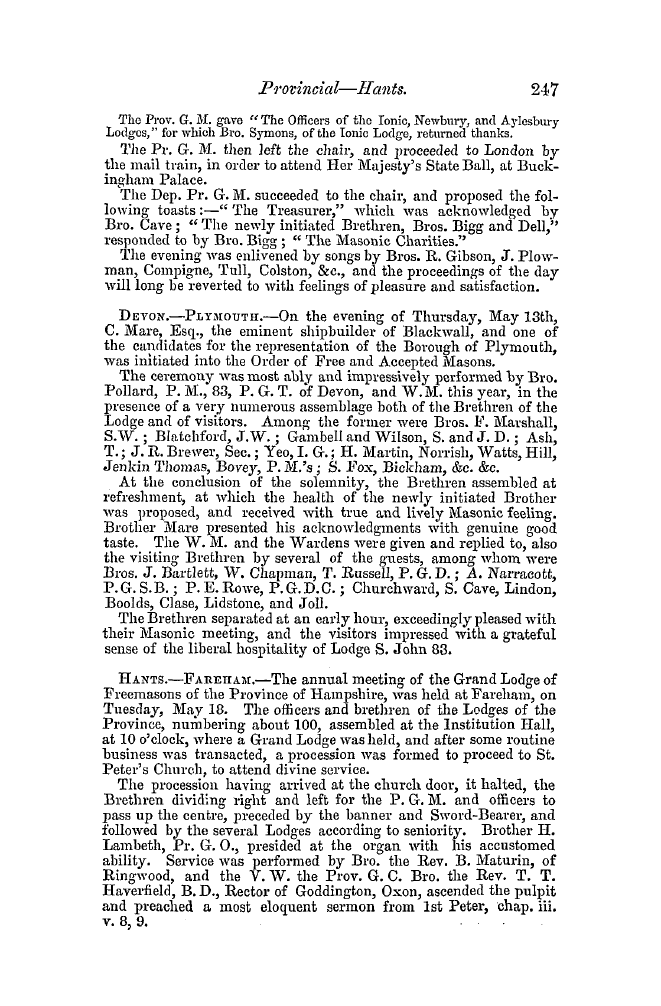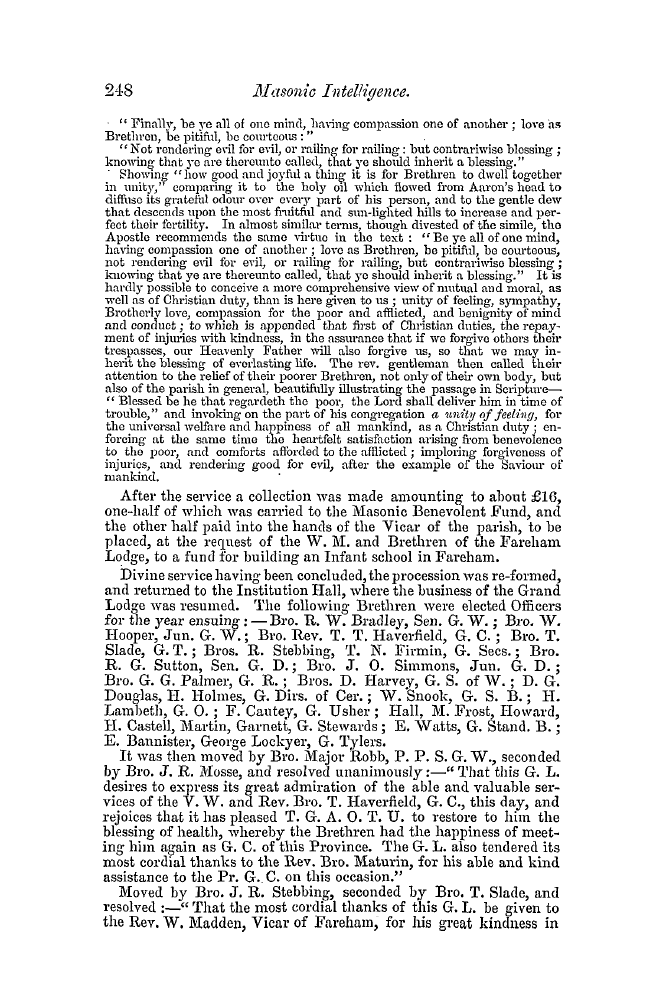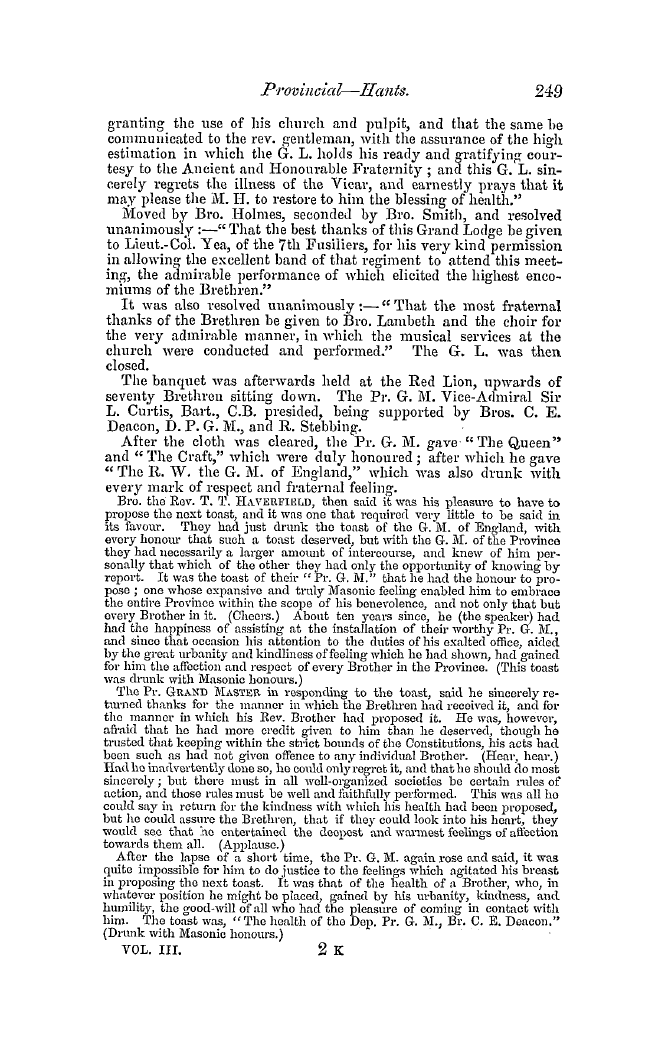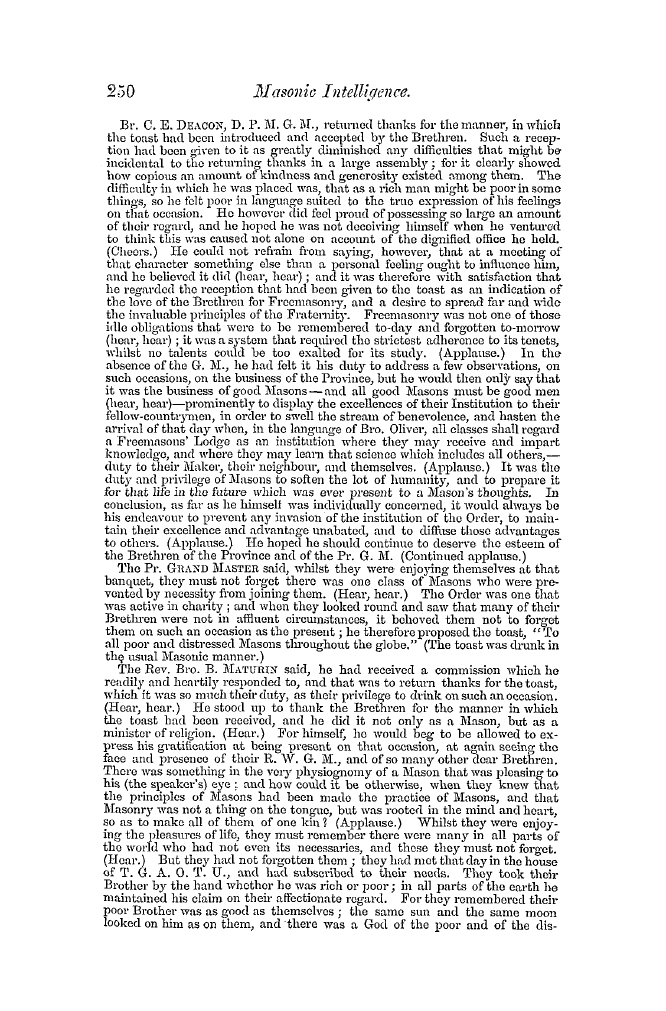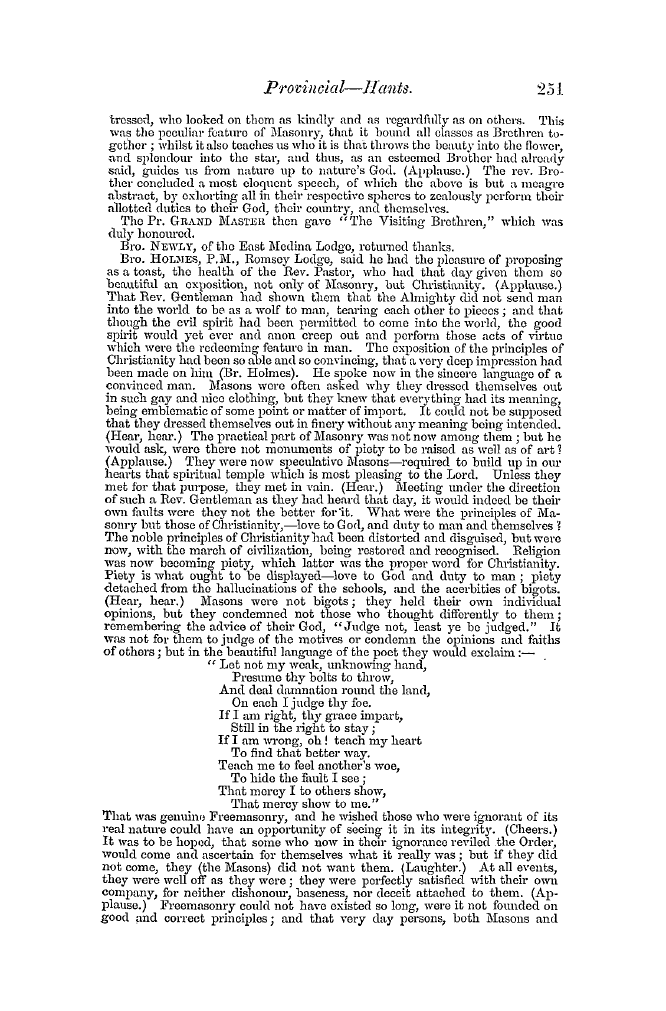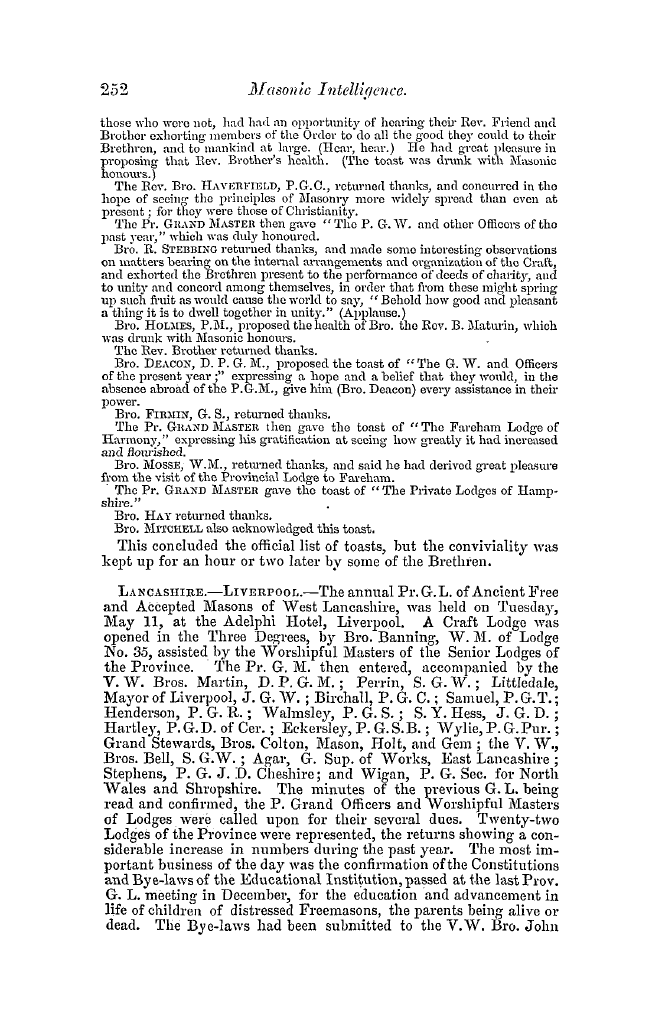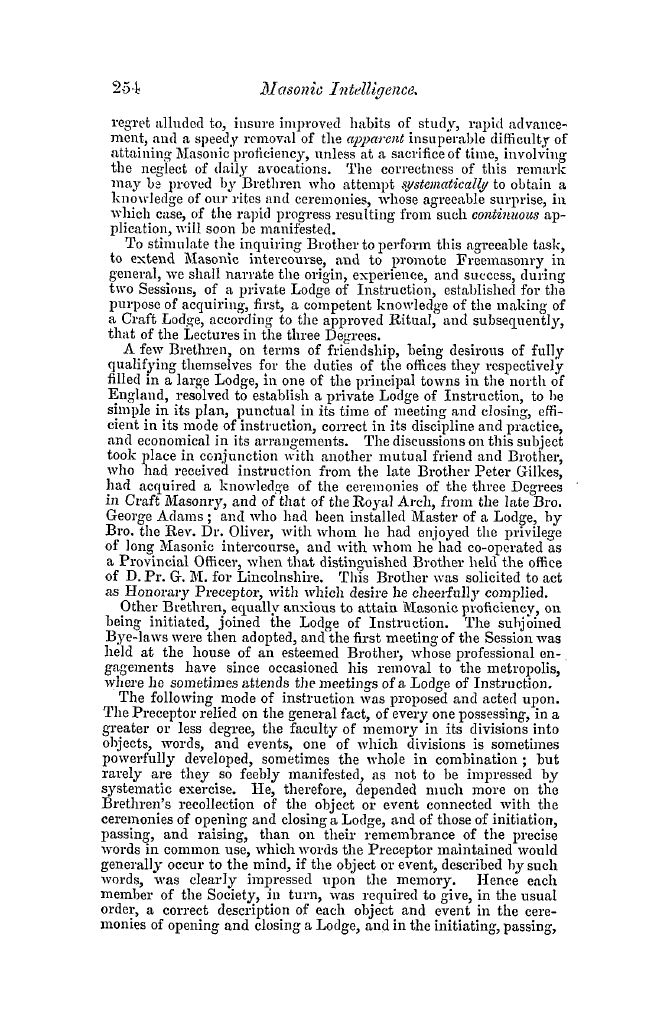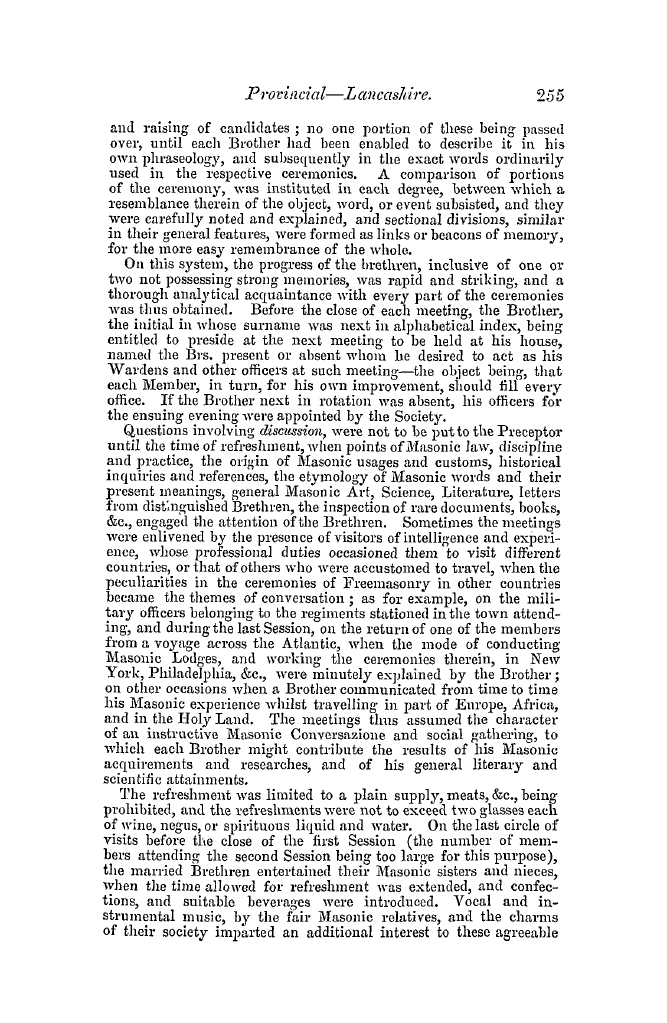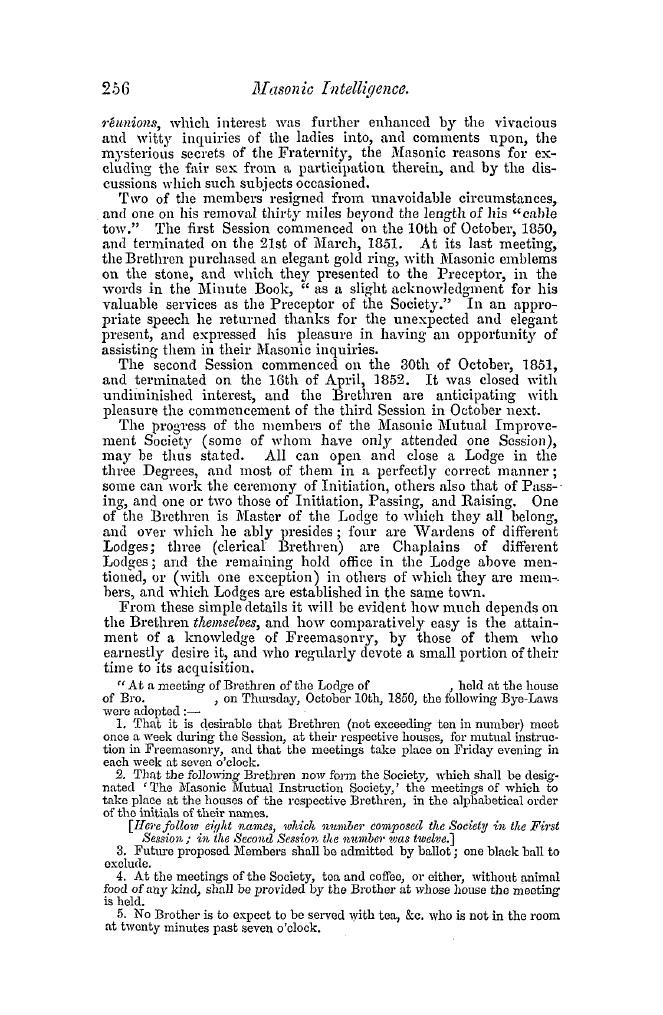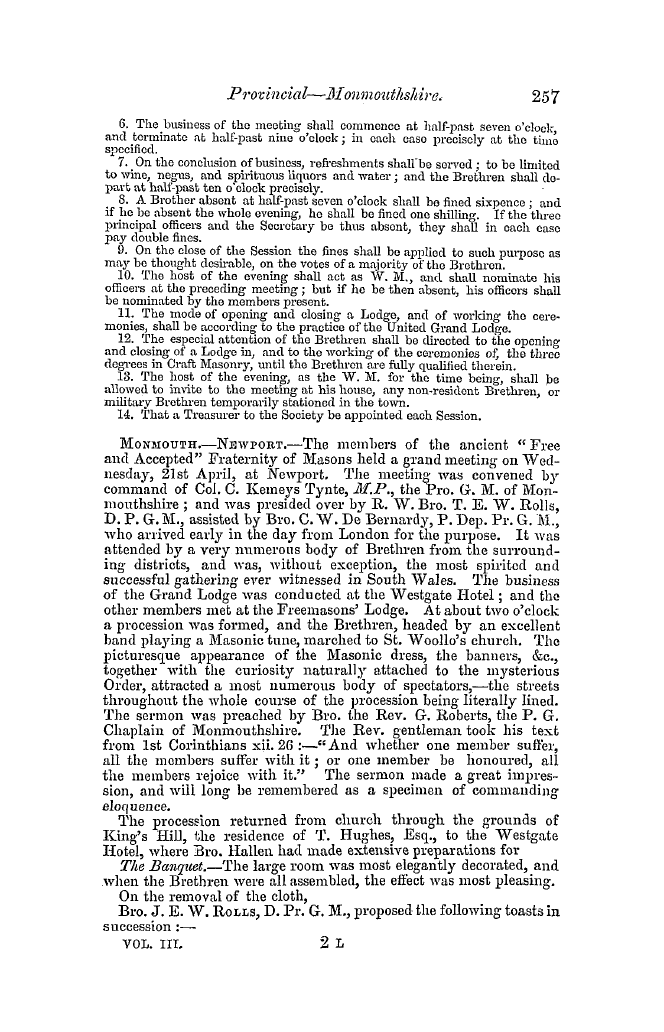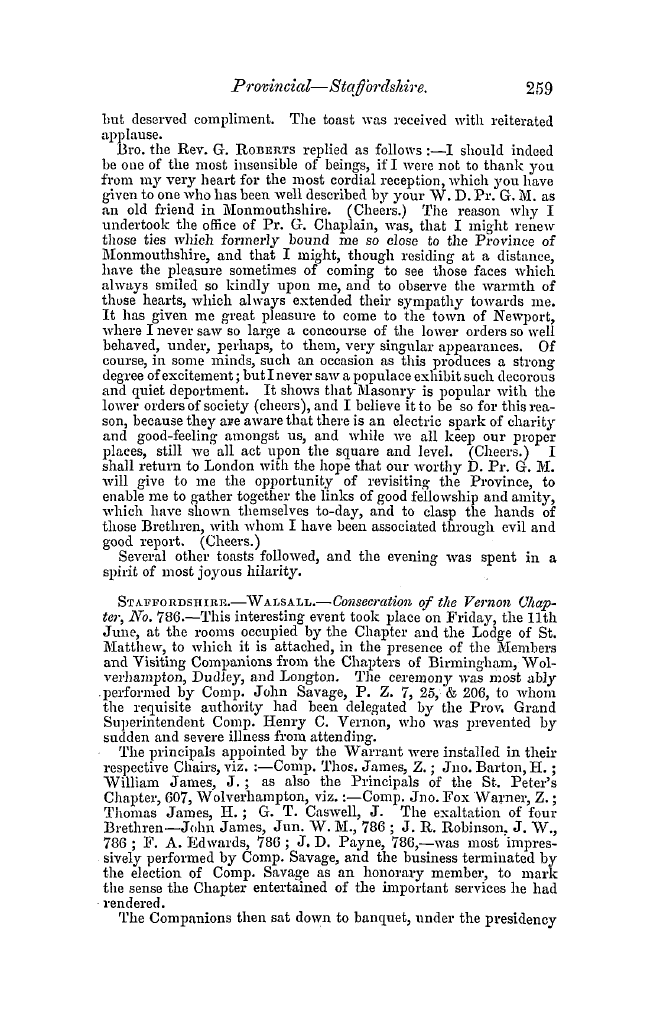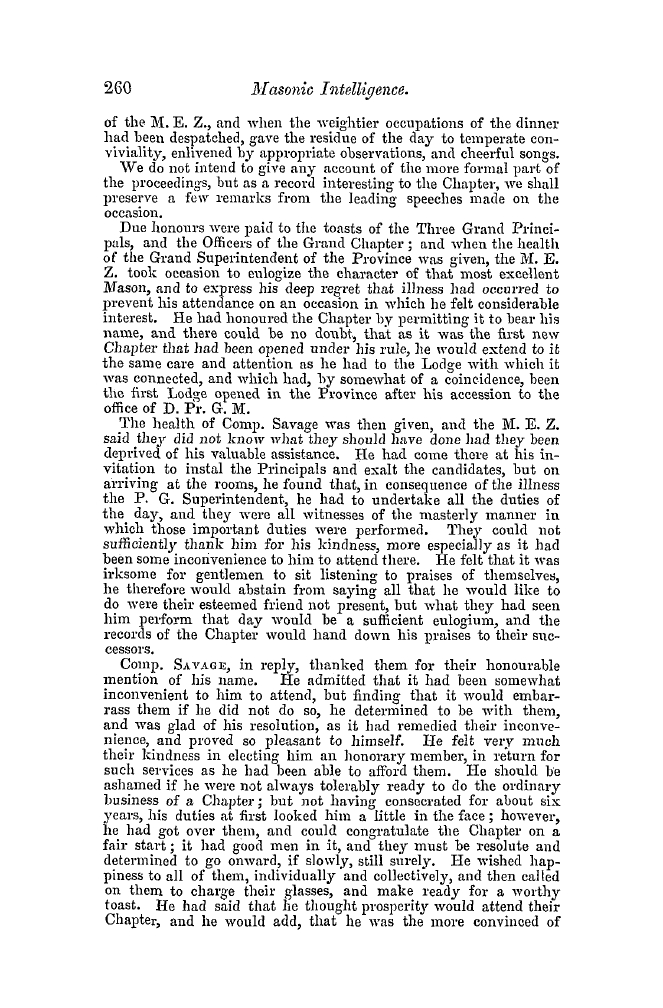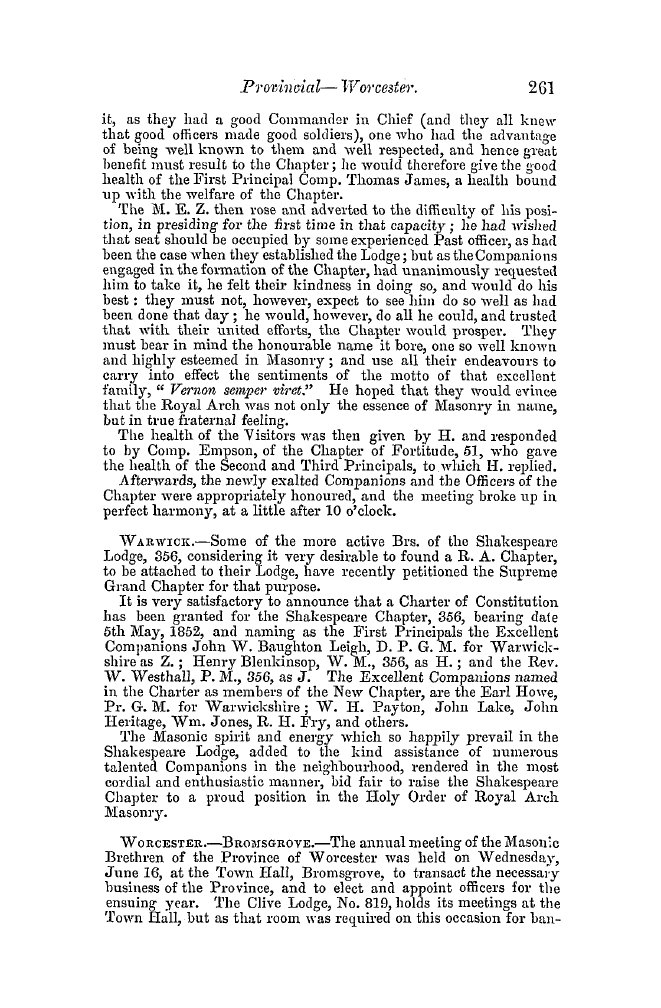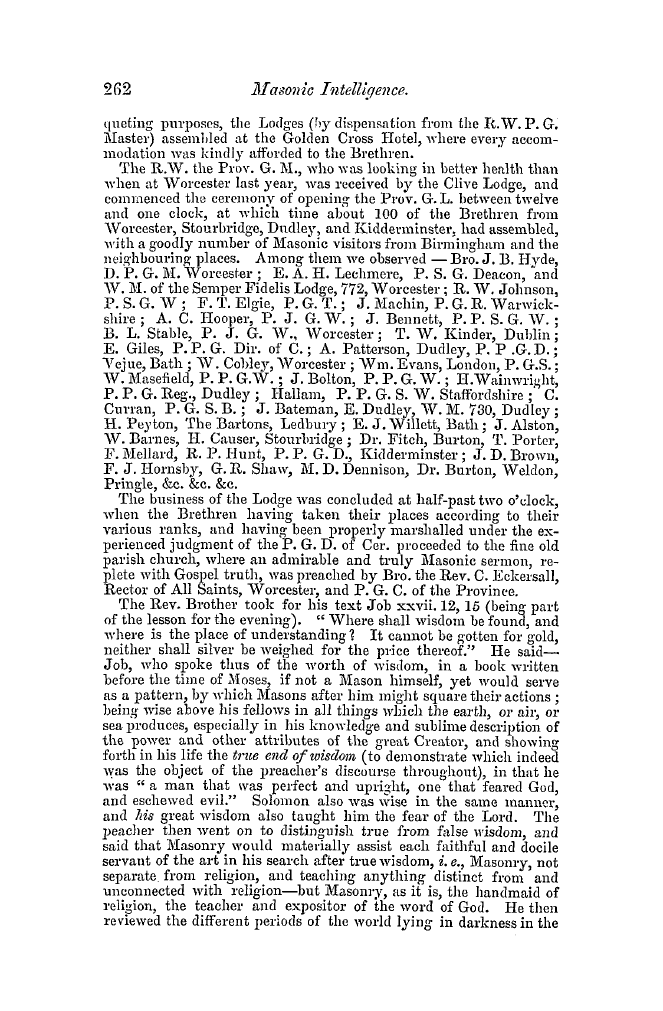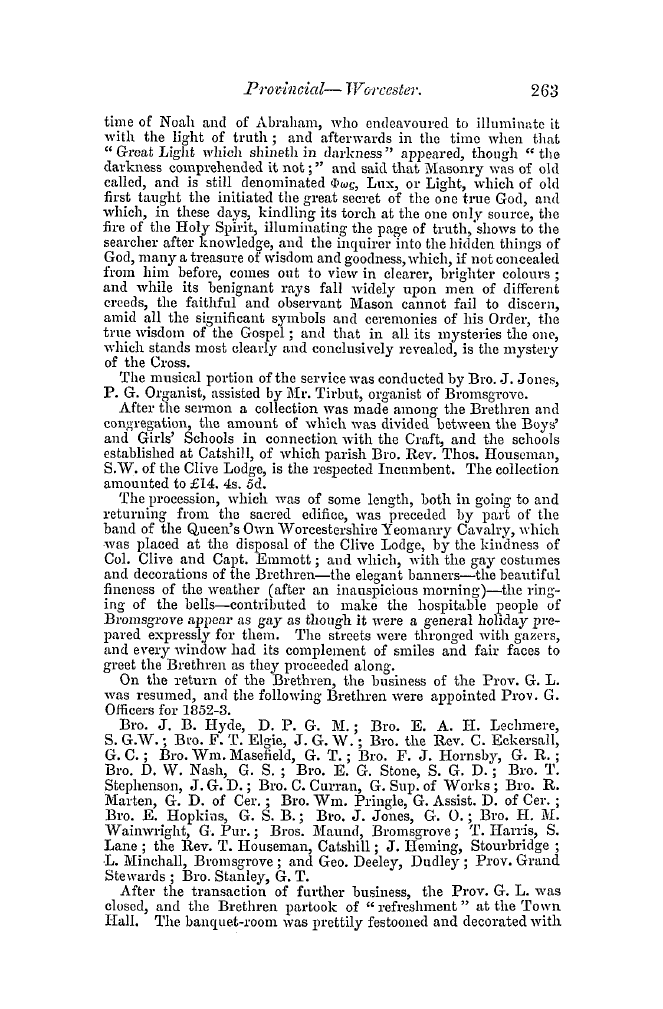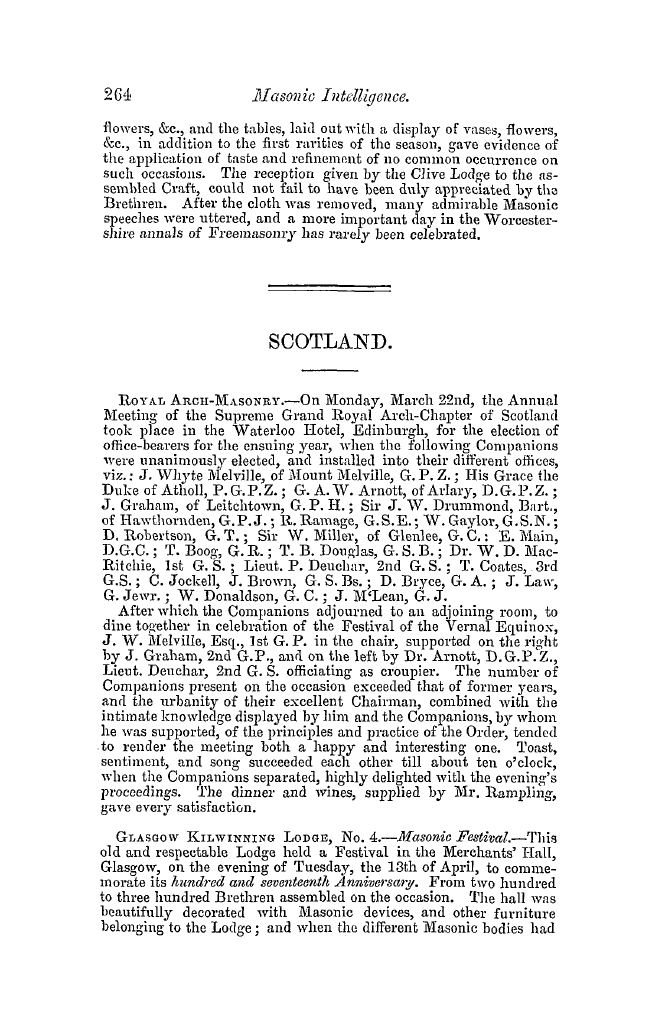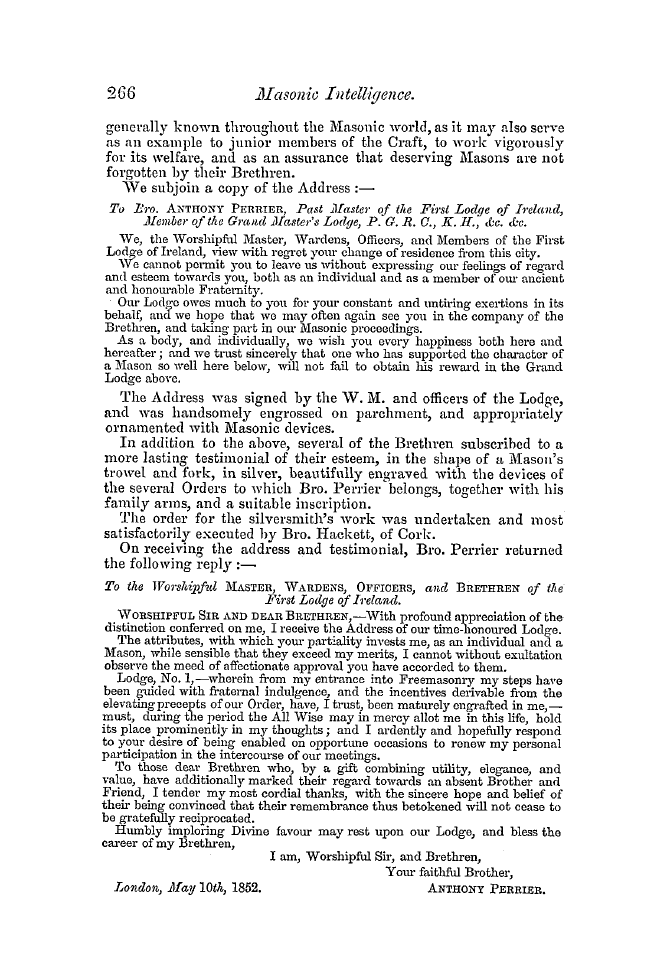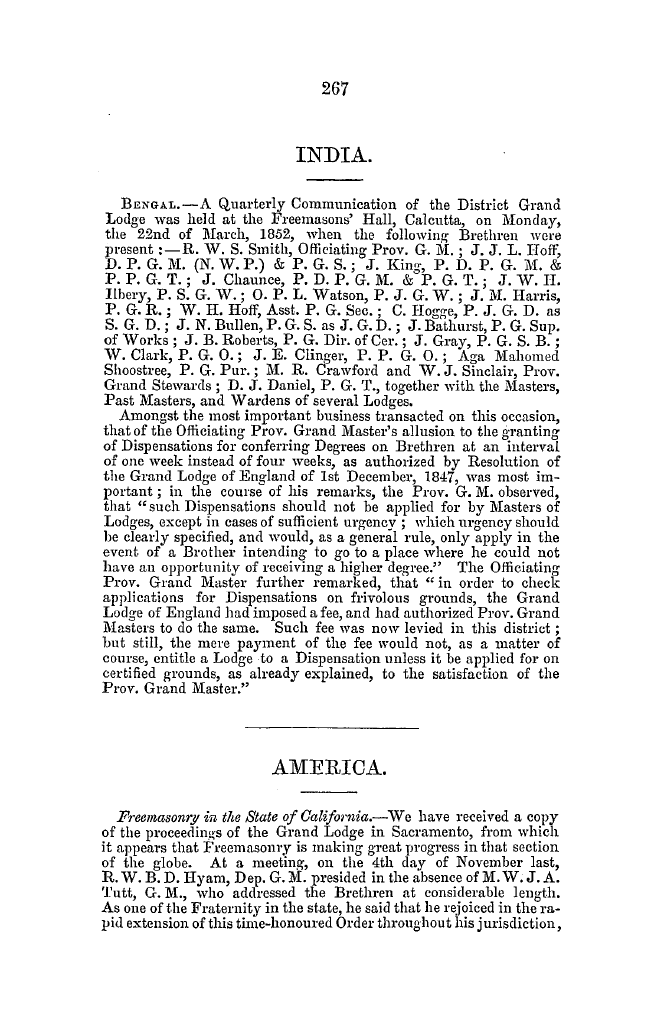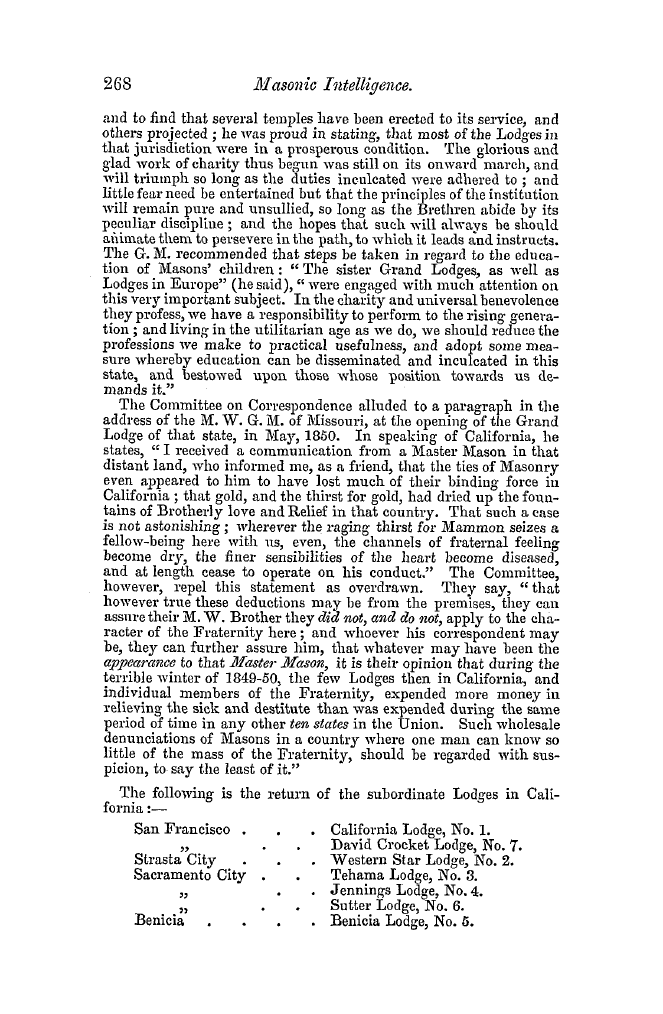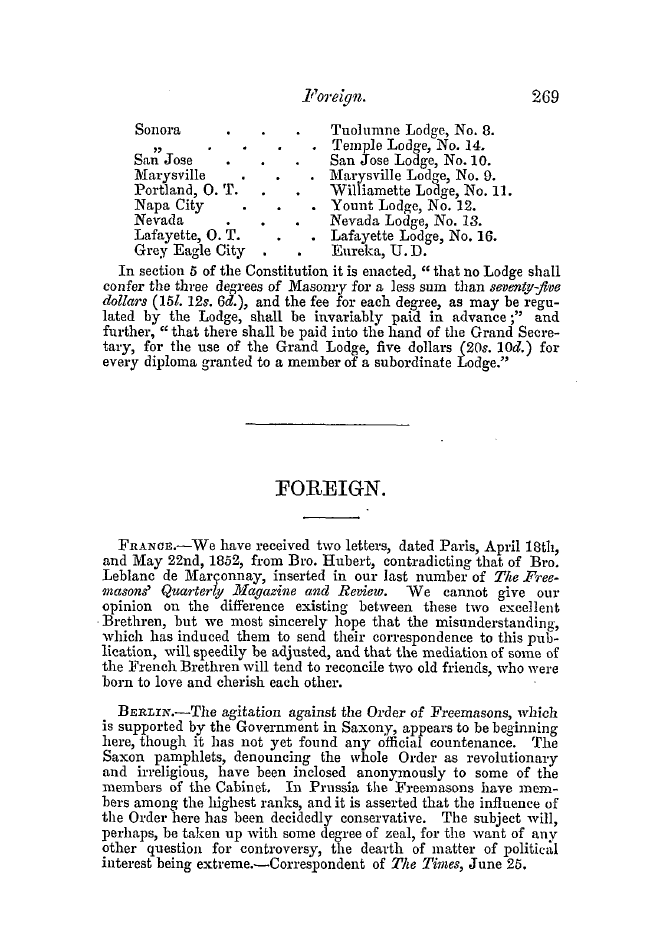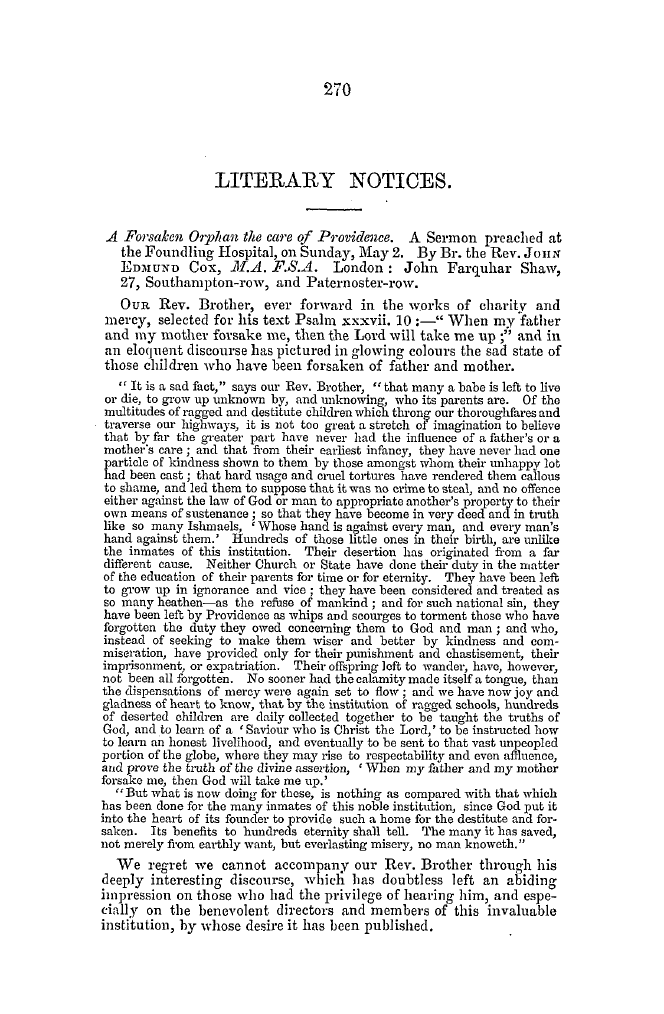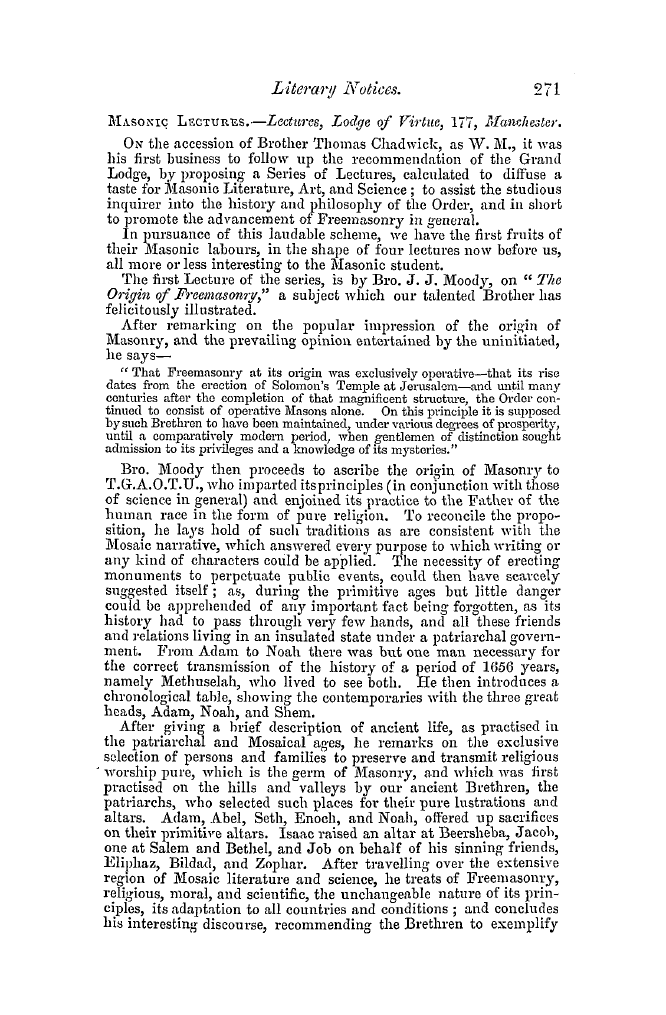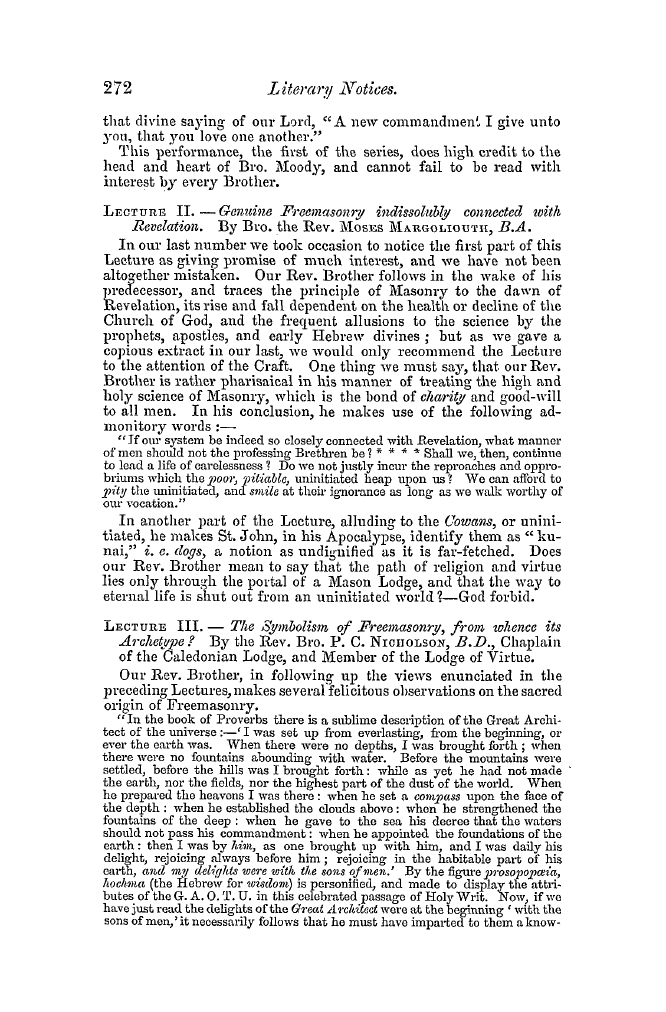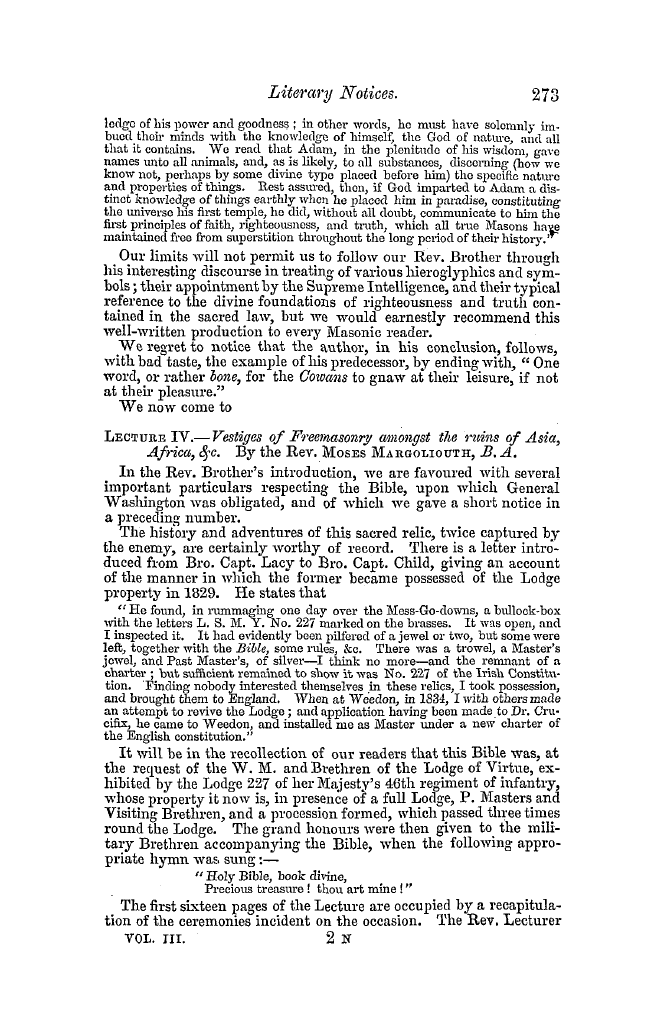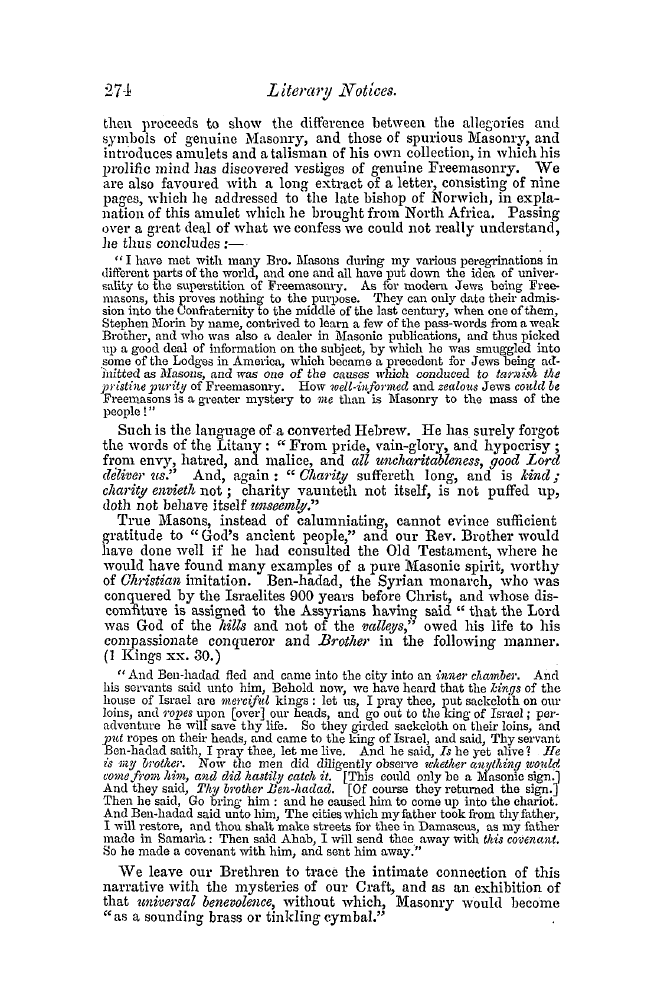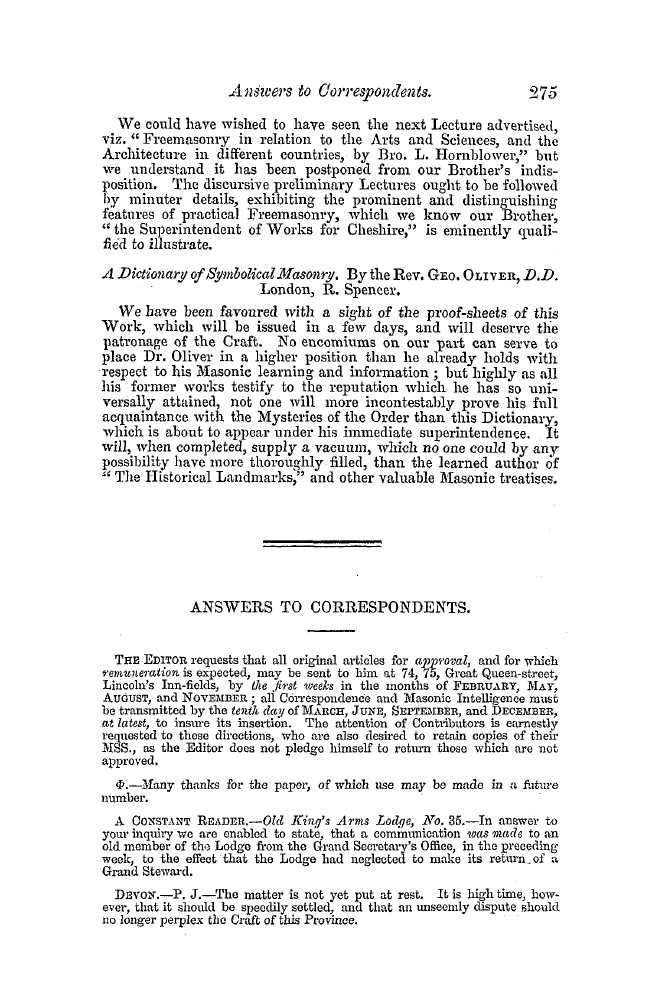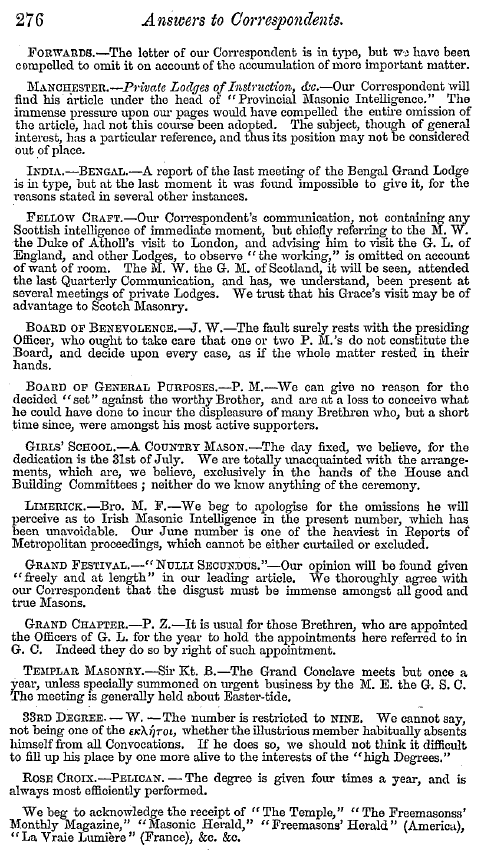-
Articles/Ads
Article NOTES ON SOMNAMBULISM. ← Page 5 of 9 →
Note: This text has been automatically extracted via Optical Character Recognition (OCR) software.
Notes On Somnambulism.
soft nurse . ' These all illustrate the same point—the influence of an excited imagination in disturbing bodily repose . As an example of this , it is related that an officer in the expedition to Louisberg , in 1578 , and AA ho was exceedingly susceptible of impressions during sleep , formed a subject of amusing experiment for his companions . They were enabled
to conduct him in his dreams through an imaginary quarrel , and having placed in his hand a pistol , he fired it , and awoke . On another occasion , they persuaded him that he was pursued by a shark , and that his only chance of escape ivas by diving , upon Avhich he accordingly plunged on the cabin floor . Arrived at Louisberg , they conducted him into the heat of an
engagement , upon which he evinced considerable trepidation ; and , having worked him up to a climax of excitement , they informed him that the man next him had fallen . Upon this , he rushed out of the tent , and falling over the ropes , awoke without the slightest recollection of his dream . " " In what way can somnambulists perceive and avoid
obstacles , " inquired Mr . Clairvoy ; " since their eyes do not assist them ?" " Possibly by the same muscular sense that blind men
acquire , who are conscious of an impediment in their path previous to touching it . Each of the senses , however , occasionally manifests activity , except those of smell and taste . It is Avorthy of remark , that there is close connection betAveen sleep-walking and insanity . They both eA'ince susceptibility of the nervous system , ancl may both be caused by protracted ,
study , or by violent mental emotion . Again , both are certainly hereditary in many cases . Insanity may be said to be a waking dream , in which the dreamer forces , as it were , his senses to confirm his fancies . Sleep-Avalking and talking are , in short , to be considered as milder forms of insanity . Partaking of the nature of dreamingis abstractionthe difference
, , being that in the former the mind is more completely separated from the body than in the latter . We talk of poet ' s ' daydreams , ' and ( exemplifying the connection of these with insanity ) , we also hear of 'the poet ' s eye in a fine frenzy rolling . ' The faculty of abstraction , which must be distinguished from mere absence of mindishoweverpossessed in
, , , the highest degree by the greatest philosophers ancl scientific men . It is a curious subject of inquiry , whether , in instances which Ave find of religious enthusiasts ancl others , both in ancient and modern times , existing for a lengthened period without food , the object may not have been attained , or at
Note: This text has been automatically extracted via Optical Character Recognition (OCR) software.
Notes On Somnambulism.
soft nurse . ' These all illustrate the same point—the influence of an excited imagination in disturbing bodily repose . As an example of this , it is related that an officer in the expedition to Louisberg , in 1578 , and AA ho was exceedingly susceptible of impressions during sleep , formed a subject of amusing experiment for his companions . They were enabled
to conduct him in his dreams through an imaginary quarrel , and having placed in his hand a pistol , he fired it , and awoke . On another occasion , they persuaded him that he was pursued by a shark , and that his only chance of escape ivas by diving , upon Avhich he accordingly plunged on the cabin floor . Arrived at Louisberg , they conducted him into the heat of an
engagement , upon which he evinced considerable trepidation ; and , having worked him up to a climax of excitement , they informed him that the man next him had fallen . Upon this , he rushed out of the tent , and falling over the ropes , awoke without the slightest recollection of his dream . " " In what way can somnambulists perceive and avoid
obstacles , " inquired Mr . Clairvoy ; " since their eyes do not assist them ?" " Possibly by the same muscular sense that blind men
acquire , who are conscious of an impediment in their path previous to touching it . Each of the senses , however , occasionally manifests activity , except those of smell and taste . It is Avorthy of remark , that there is close connection betAveen sleep-walking and insanity . They both eA'ince susceptibility of the nervous system , ancl may both be caused by protracted ,
study , or by violent mental emotion . Again , both are certainly hereditary in many cases . Insanity may be said to be a waking dream , in which the dreamer forces , as it were , his senses to confirm his fancies . Sleep-Avalking and talking are , in short , to be considered as milder forms of insanity . Partaking of the nature of dreamingis abstractionthe difference
, , being that in the former the mind is more completely separated from the body than in the latter . We talk of poet ' s ' daydreams , ' and ( exemplifying the connection of these with insanity ) , we also hear of 'the poet ' s eye in a fine frenzy rolling . ' The faculty of abstraction , which must be distinguished from mere absence of mindishoweverpossessed in
, , , the highest degree by the greatest philosophers ancl scientific men . It is a curious subject of inquiry , whether , in instances which Ave find of religious enthusiasts ancl others , both in ancient and modern times , existing for a lengthened period without food , the object may not have been attained , or at

































































